Corporation by Hostile V
INTRODUCTION
Original SA post
Here's a little relevant music: https://www.youtube.com/watch?v=kf4eu5y0418
INTRODUCTION

Corporation is a RPG that began its run in 2009. It’s a d20 based game that is best described as a cross between the original Syndicate game and 2000AD’s progs set in the 26th century in a world where megacorporations and a unified world government control the Earth. The player characters are all humans who have been recruited by the major corporations of the world to serve as their Agents. Agents are chosen from people who are at least above average and then made better through the use of cybernetic implants and augmentations.
From the get-go, let’s talk about two problems I have with this game. The first is that the layout is kind of weird! The sections are (in order):
- Introduction
- 1: Character Creation
- 2: Equipment
- 3: Cybernetics
- 4: Telepathics
- 5: Character advancement
- 6: The Corporations
- 7: The UIG and the Order of the True Faith
- 8: The Game System and Rules
- 9: The World in 2500
- 10: The Cities
- 11: People and Places
- 12: Running a Game of Corporation
- 13: Antagonists
The other major problem is that the game lets the players do a lot and there are loose guidelines for letting them do that (want to make money betting on professional sports? You can!). Also the rules are a bit cumbersome at times (like, for example, rules for item/armor conditions). There are a lot of books for Corporation that offer more and more things to do and buy and they also bring new guidelines to the table (“getting infections from stolen nanotech implants because the guy didn’t bake the plates properly and kill off the self-replicating ones” and “how to make money from selling clones” come to mind). The game really does run the risk of offering you Too Much but I do understand the idea behind it. It’s less “these are the concrete rules!” and more “maybe one of your players will have an idea to do this so we want to at least offer you a loose framework for how they can do it. This is assuming you want to make this be a part of your game or allow the player to do it”.
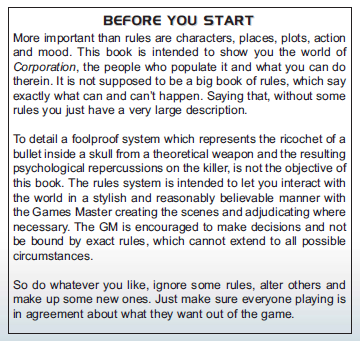
I do enjoy this game, I do think it has some interesting ideas and I have some appreciation for the fact that it’s not just a hardcore cyberpunk dystopia that has somehow existed for at least a century. It’s a bit like Transmetropolitan in those regards; the world is not in the best state but it’s better because when it was at its lowest, mankind almost wiped itself out for dumb reasons. Also I’m not one to quibble about the definition of “cyberpunk” but you are most definitely working for The Man and it’s really not that awful. It’s much more of a sci-fi espionage/action game with augmentation, alien technology and future shenanigans than cyberpunk. And on that note, let’s get into a proper introduction to the game and world proper.
A quick note on what I will and will not be including: I'll be including sidebars and pictures when appropriate. There's a lot of in-universe writing in the book sprinkled pretty liberally and while it's decent, I'm not going to focus on that and talk more about the mechanical content and descriptions.
CORPORATION: INTRODUCTION
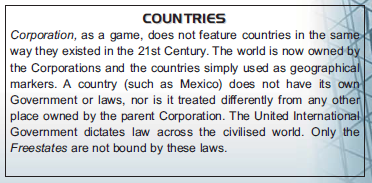
Let's skip the section that explains what a role-playing game is. The year is 2500 and the world is united under the banner of the United International Government. Beneath the UIG are the five corporations that control large swathes of the world, enforcing their own laws and way of life. The five corporations are:
- Ai-Jinn: a Chinese industrial giant responsible for mining and construction. Ai-Jinn is also famous for its Triad roots which it continues to these days, using Agents as ringleaders of organized crime groups to make extra money for the corporation.
- Comoros: an Indo-African corporation responsible for education and culture. Comoros has the best telepaths hands-down and are more empathic as a whole and come across as the “good” faction. Despite that, they really hate the UIG.
- Eurasian Incorporated: formed from the EU and Russia becoming a mega corporation, EI is responsible for health/medicine and leisure. Eurasian Incorporated is filthy rich with its Agents famous for acting like 90s-era New Russian vory with little regard for collateral damage. Because of its size and power, EI is full of corrupt businessmen and infighting and as a result it’s got a public image people love to hate.
- Shi Yukiro: formed from a Japanese zaibatsu, Shi Yukiro is responsible for electronics and cutting edge high tech. They’ve got the least influence by size and control and are particularly insular, guarding their ion technology carefully and making its Agents adhere to Japanese traditions.
- Western Federation: formed from an American arms manufacturer, the Western Federation is responsible for guns and defenses (and unofficially entertainment). The Western Federation is a military machine that enforces its ideals with an iron fist, wishing to bring about a new world order of Federation supremacy where crimes are dealt with harshly and things they don’t like are illegal. The main reason they haven’t reignited the Corporate Wars is because they haven’t fully stamped out resistance at home.
Players control Agents of a Corporation. You sign a contract and they turn you into enforcers and street-level executives for your corporation while trying not to attract the intervention of the UIG. It’s a lot like EVE Online and how Concord doesn’t give a shit about what you’re up to, you have broken the law and you need to be punished. Your jobs might be legal or illegal but completion gets you paid and brings benefits. Plus, playing by the rules grants you better perks of citizenship in the UIG, which gets you paid better. The threat in the field isn’t going to be some civilian and in fact you really shouldn’t use overwhelming force against normal people. The real threat comes from the fact that Agents doing other missions have the same basic strengths as you and won’t go down without a fight.
WHAT MAKES AN AGENT?
For starters, Agents are selected from individuals who are more skilled than the common person. When they sign a contract to become an Agent, their Corporation will outfit them with a collection of augmentations that are standard across all Agents for any corporation. They will also foot the bill for the price of these cybernetics and will pay monthly for their upkeep (plus if you lose them due to, say, total loss of body, they’ll pay for installation of new ones). Basically this is the starter pack that makes you more than human and no matter your employer you get these benefits that can’t be taken away from you.
- SVC/Sub Vocal Communicator (6k credits): The SVC is implanted in your jawbone and will let you talk to friendly Agents without moving your lips or speaking loudly. It can also speak to your HQ. Range is 300 meters with security signal decay with range; talking to someone on the bench next to you is 100% secure, talking to someone 300 meters away isn’t.
- ID Chip (500 c): All Citizens, Agents and UIG officers have ID chips mounted on the back of one hand beneath the skin. They can be scanned to confirm identity and let the scanner know more about the owner’s details such as licenses, cybernetics and memberships. Information is available depending on the Rank of the person viewing the chip’s info and chip checkers can be mounted on doors, weapons, vehicles, etc.
- AI Chip (18k c): An Agent receives a level 1 AI chip mounted on their neck that basically acts as the central processing/coordination hub for all of your augmentations. It can also be used to help hack, control weapons or run subroutines. The max level of an AI chip is 9 and it requires AI levelx5k credits to increase your level at the rate of one level a week. The AI chip doesn’t get a lot of use in this book, all told.
- Basic Process Socket (20k c): A x-pin socket is installed at the back of the skull that allows the Agent to slot chips that give them information or skills. The socket is covered with a little flesh-colored cover. More info will come later on chips and expansions to the socket.
- R-Drug (400 c/month): The R-Drug was developed by Two Snakes Medical (a smaller corporation) and allows the Agent to regrow missing body parts by returning them to their original genetic form. Facial features, toes or fingers regenerate in a week, two weeks for a hand or foot and three for a full limb. Unfortunately, you can’t regenerate a head. The R-Drug makes the loss of a limb a minor long-term inconvenience and a handy way to incapacitate an enemy Agent.
- Histonamide (100 c/month): Histonamide makes blood clot faster meaning that Agents are more resistant to bleeding from normal wounds. They’re still vulnerable to “mashing” damage which causes bleeding. In game terms, anyone without Histonamide automatically takes mashing damage while Agents only take it from mashing weapons or overwhelming damage. Bleeding is Very Bad.
- Atrophic DNA (7k c): Residual DNA left by Agents decays to uselessness in 10 minutes unless a special formula neutralizes the process within 5 minutes. Handy for getting rid of incriminating evidence!
- Synaptic Modulation (22K c): A feedback chipset is installed that lets the brain and Agent recognize pain without actually feeling the worst of it. This isn’t to say they don’t feel pain, it just doesn’t really hurt and you can convey how badly it feels without it actually hurting.
- Independent Cellular Excision (ICE) and Neural Stabilizers (30K c): ICE technology is installed in the brain and heart and major organs to ensure they’re resistant to damage. Organ and head trauma won’t really affect an Agent unless it’s an overwhelming application of force (or if the organs are just plain removed). In game terms, you’re immune to moderate organ damage and can’t be knocked out.
- Ambidexterity (free): Agents are taught to use both of their hands for tasks. Not fancy but certainly practical.
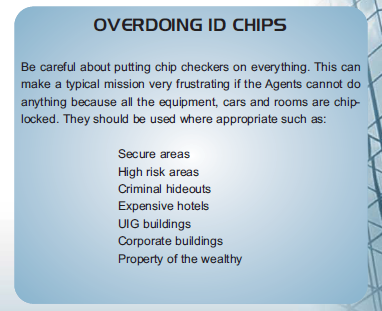
NEXT TIME: We’re going to skip ahead some to chapters 8 and 5. After that we’ll get to chapter 1 proper and see what it’s like to build an Agent.
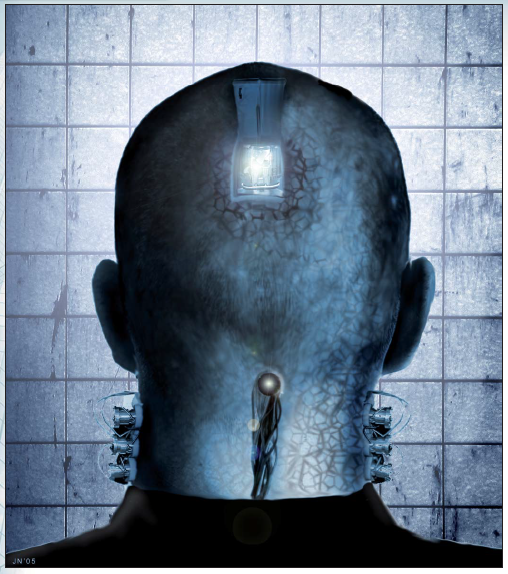
A stylized picture of a process socket.
CHAPTER EIGHT: The Game Section
Original SA post
CHAPTER EIGHT: The Game Section
Okay so I don’t feel like I have to go too in depth with all of this. Corporation uses its own d20-esque system (The Brutal Engine because this is by Brutal Games). The basic dice roll to do anything is 2d10 and you should roll under the target number. There are d6s and d20s and the other dice are used too, they’re just much more situational. Typically you’re rolling under a flat TN of Stat+Skill+penalties/bonuses or occasionally Stat+Stat or Skill+Skill. It’s up to the GM if you can attempt the roll again and there’s the old statement of “roll if it makes sense” applied.
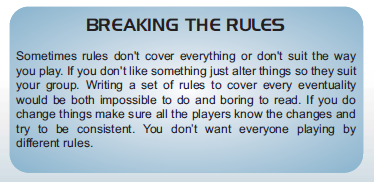
If you don’t roll under the TN (meeting the TN counts as a success), that’s just a flat failure. Success is different; every point difference between the result and the TN is a point of Excess (XS). XS can be carried forward to a follow up roll if the GM finds it appropriate (“you Stealthed so well you get +4 to knocking out the guard” is the example used) or it can just be a stylistic flourish that makes you look good. Occasionally it can be redeemed in other ways but they’ll come up when they’re mentioned. Technically they have already been mentioned, but I’m doing this chapter out of order, so.
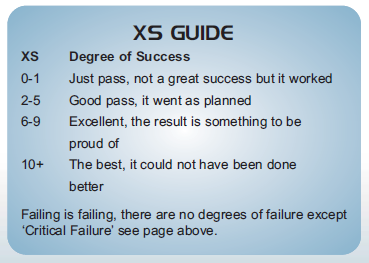
So why 2d10 if it’s basically a d20ish system? This is because critical successes/failures depend on doubles. Double 10s are always a critical failure and snake eyes always count as a critical success. There are some circumstances that will adjust your crit range (good quality weapons add to success, damaged equipment add to failure) but you always crit-fail on any double when using a skill you don’t know.
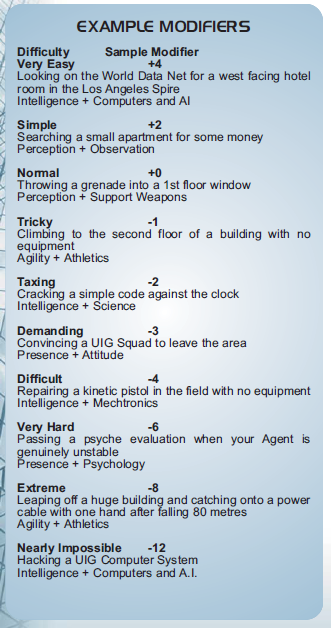
If you are using a skill and have another skill you can convince the GM is relevant, you might be eligible for a Sympathy Bonus because the two skills synergize in this situation. The bonus should be half the relevant skill rounded down and the GM should be picky about accepting this reasoning because otherwise it’s pretty easy to add a substantial bonus to your roll.
There are rules for multiple successes over time but basically they should be reserved for situations that need multiple skills or are really long and drawn out. Let's just move on to combat.
COMBAT
You know it’s kinda cheating to do this, but they put the entirety of the combat rules in a single little box and I’m just gonna use that.
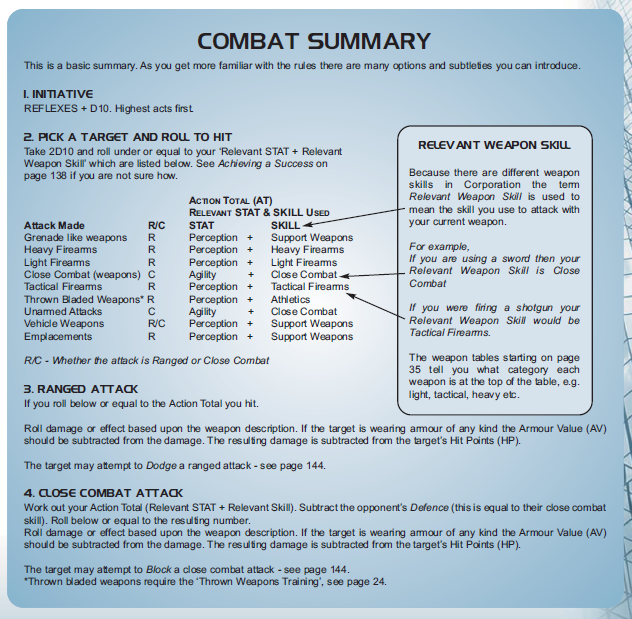
But there are more concrete rules. Rounds are around 3 seconds each and combat continues until something major changes. Draws on Initiative go to the person with the higher Reflexes and anyone who initiates combat gets +4 to their first attack. You can also choose to hold your action and spring it at will during the round. Movement and actions are treated interestingly. Basically, as seen below, movement is considered to be an optional rule. Actions are limited by your weapon’s Rate which says how many times you can attack a round; you can willingly attack less to gain a bonus to accuracy for your other attacks (+2 per dropped attack). Finally, Defense. Your Defense is flatly equal to your Close Combat skill rank and it acts as a penalty to hit you. You lose your defense if you’re fighting in melee with a firearm or if you’re unarmed in melee and your opponent has a weapon. You can also divide your defense up among multiple attackers trying to get at you. Both the loss of defense in certain situations and dividing defense can be mitigated or eliminated with the proper training.
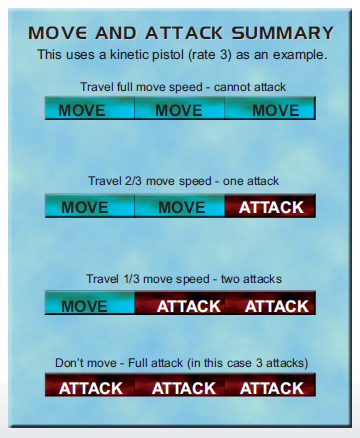
CRITICALS
Crits on attacks act different than regular skill checks or other checks. In close combat, a critical failure gives the enemy a free single attack against you that bypasses your defense. In ranged combat your shot misses and the gun jams or malfunctions at the end of your turn. The next turn you have to spend an action to get the gun working again. A blast weapon failure exposes the user to 1/3rd of the blast. Critical hits are a lot simpler: roll damage twice, add and double it.
MANUEVERS
Dodging comes in Active or Full. Active dodge is declared on the start of a turn and you can give enemies up to your Reflexes in penalty to hit. However, this costs your actions, limiting the amount you can take that round to the remainder. Full dodge is declared before your turn and grants your Reflexes+2 penalty to hit you while you do nothing but dodge.
Blocking is for melee only. Blocking simply doubles your Defenses for a round while limiting you to just one free action.
In extreme emergencies you can attempt to Retreat by making a Perception+Agility roll with a -1 penalty for every attacker after you. Success means you get away clean, failure means you get away but everyone gets one free attack on you. And sometimes you just can’t run away.
Cover gives your enemy a penalty to hit you while you take half that penalty to attack from behind it.
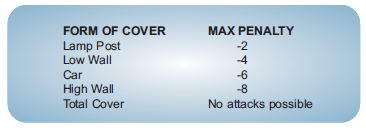
Targeting is broken down into Aiming, Target Shot and Vital Shot. Aiming is simple: spend one action to increase the chance to hit and damage by +2 up to +6 for the next attack. Yes, this includes swords or melee weapons; you don't lose your Defense from aiming. Sniper weapons double that, starting at +4 and up to +12. A Target Shot is a called shot simply to target a specific item or a piece of a person. A Target Shot is a cinematic shot and doesn't do extra damage but if you need to, say, shoot a camera, shoot a gun out of someone's hands or ping someone to get their attention you use Target Shot. A Vital Shot is basically Power Attack crossed with doing extra damage on a headshot: take a penalty to hit and increase the damage dealt by that penalty.
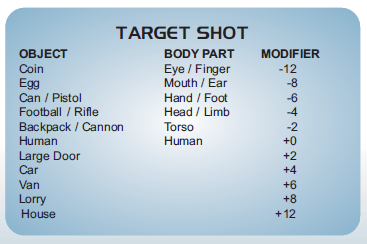
OTHER ACTIONS
First, free actions.
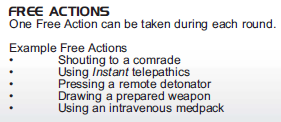
Two weapon fighting gives -4 to attacking without proper training. You can also dual wield two-handed weapons one-handed with Strength 10 which doesn't give you the standard extra Strength damage.
Wrestling...basically take Restraint Training.
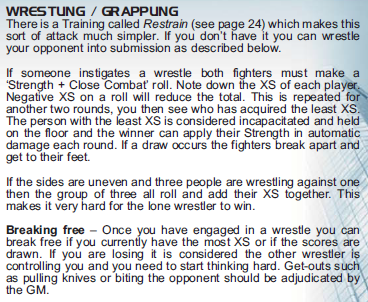
Knocking someone out with a punch is -4 to hit and forces the recipient to make a Perception+Endurance test with the attacker's XS as a penalty or be KO'd for 1d100 minutes. Deals Strength damage and doesn't work against Agents. Great for civilians!
Executions deal maximized weapon damage that is then tripled. Alternately, the GM says it's an instant kill. You have to have at least 1 rank in a weapon's relevant skill to execute.
Opposed actions are just "specific roll-off and highest XS wins". This includes disarming, racing, challenge pissing.
DAMAGE AND HEALING
Roll the relevant dice or inflict the relevant status effect (or do both, this might happen) on the successful use of a weapon. Armor and energy shields reduce the damage you take, shields before armor unless it bypasses a shield or under special circumstances. Specifically, armor is Always On and just subtracts damage, shields eat damage until they run out of juice to soak. You simply reduce the damage you take from your HP pool.
Mashing damage is different and worse. Basically every point of mashing damage causes catastrophic bleeding every round and is cumulative. Take 2 mashing damage one round, lose 2 HP, take one more point, lose 3 that round. You need a medpack or an Intelligence+Medicine roll to staunch it. Civilians take mashing damage all the time from every attack and as a result it is very easy to kill them.
Severing limbs! Severing limbs is an all-or-nothing affair with a melee weapon and substantially easier with a ranged weapon that severs on max damage. Pick a limb and attack with a penalty and if you deal the requisite amount of damage, the part is severed. If you miss, the attack does no damage, if you do insufficient damage you just hurt them but their parts stay attached. As you can see below, fingers are hard to hit and easy to cut off, a torso is easy to hit but hard to bisect. The damage is also inflicted to the victim's health pool. Considering how it's impossible to knock out an enemy Agent, it's considered effective to simply incapacitate them by cutting off both of their arms and making sure they're suitably restrained with their arms nearby. It's embarrassing as hell but it's non-fatal and if someone absconds with their arms, well they'll grow back in a few weeks.
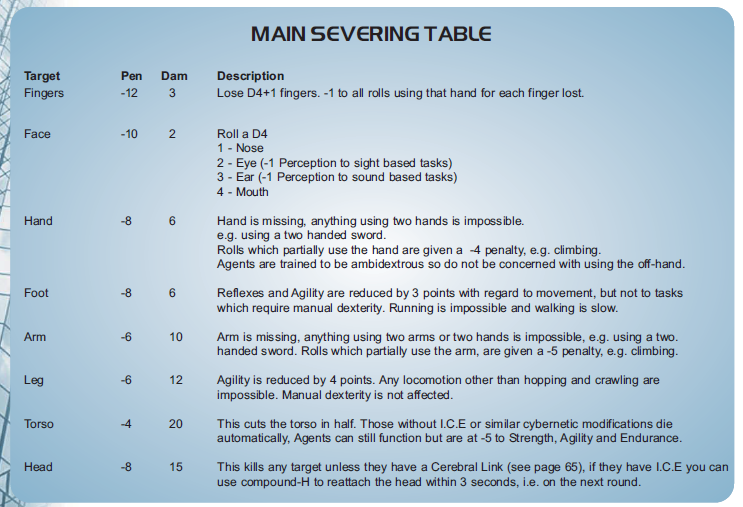

Speaking of, let's talk health points. An Agent starts with Strength+Endurance+20 HP. A regular person has Strength+Endurance+10. If an Agent is reduced to 0 HP, they're incapacitated and their body starts to shut down. Unless you're wounded by mashing damage, you don't lose any more health at 0 unless someone walks over and does you more harm. The real threat is brain death; an Agent loses 1 Intelligence point a round unless someone stabilizes them or slaps them with a medpack. A stabilized Agent will regain their Intelligence at a rate of one point a hour. An Agent dies at Intelligence 0 or if their hitpoints go into the negative equal to their Strength+Endurance. A normal human starts to lose 1 Endurance point at 0 HP and will die when it's depleted and also need first aid or a medpack.
So we've talked about how to get hurt, how about getting well?
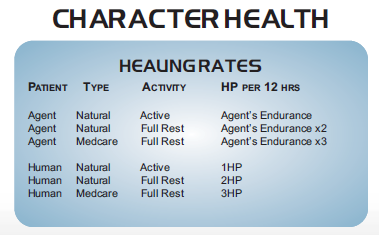
Medpacks are the fastest way to get well. Simply apply intravenously or physically to heal a set amount. They're basically on par with healing potions and are designed to minimize downtime. If you're out of medpacks, you can try Intelligence+Medicine (only heals 2 HP a pop) or just rest if time permits. But let's say you lose a limb and you don't want to wait for it to regenerate. You're in luck! Simply buy a can of Twin Snakes Medical's Compound H, spray the severed limb's stump, spray the stub on your body, attach the limb to your body and wait 15 minutes. In 15 minutes the wound will heal perfectly without a scar, giving you the lost HP right back immediately. It's not hard to get well again, which is quite nice.
OTHER CONDITIONS
You can hold your breath for 30 seconds per point of Endurance before you take 5 HP a turn. If you can breathe again, regain the lost HP at a rate of 5 HP a round.
If you're on fire, take 1d6 damage a round. Either make an Agility+Reflexes roll to roll around or have a friend spend a whole round to put you out. Fire does not stack, so if you're any more on fire you only take 1d6 damage a round. Also the game openly states that if you have Armor 6, it just eats all of the damage and you can basically be on fire harmlessly. Try to use this to your advantage!
If you're blind or blinded, whoops, that counts as Perception 0 for anything involving sight such as shooting a gun. Walking any faster than a slow, cautious walk is dangerous to you. This also applies to deafness or any stat being 0; if it's 0, you can't use that stat.
Agents take 1 damage every 2 meters they fall while a human takes 2 damage every meter. A controlled fall lowers the range fallen by 2 meters and armor eats fall damage. If you hit the pavement fatally, a Strength+Endurance-4 roll can just set your HP to -5 and put you in a dying state.
Poisons have a level of potency and can be halted by a filter that blocks any poison/toxin equal to or lesser than the filter. If that doesn't stop it, whoops, defer to the poison's info.
There are also rules for dealing with mental stress.
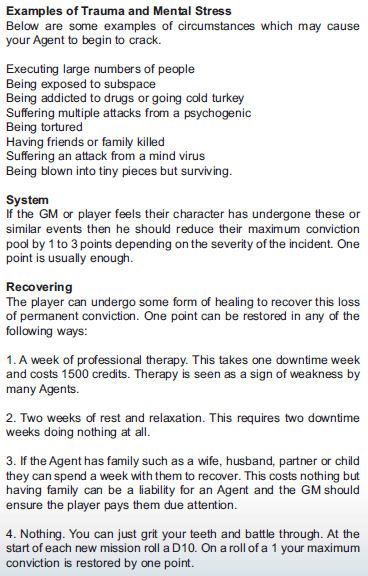
CONVICTION
Conviction is used to push the Agent when they really need it. You can only spend one point from your pool and you only get Conviction back by doing something important to the mission or your character. Your max pool is 5. Conviction is used to get +4 to your TN, reroll, boost a psychic power's rating by 2 for a round (max 10) or make a non-combat action while incapacitated/dying (such as plugging in the IV to your medpack).
VEHICLES
Regular under-pressure driving is a simple TN. Unless you have ranks in the Driving skill and the proper training to fight and drive at the same time, doing that is a terrible idea. It's -4 to all rolls while trying to drive and fight at the same time. However, you can totally use the vehicle offensively. If you're using the momentum of the vehicle for drive-by close combat, add +2 damage to the attack for every 10 MPH the vehicle is going. You also deal 1d6 damage per 10 MPH if you ram with a vehicle. Basically hitting a normal person with a car going 40 MPH has a good chance of killing them. There are rules for vehicles taking damage earlier in the book but basically vehicles have armor and HP and yadda yadda.
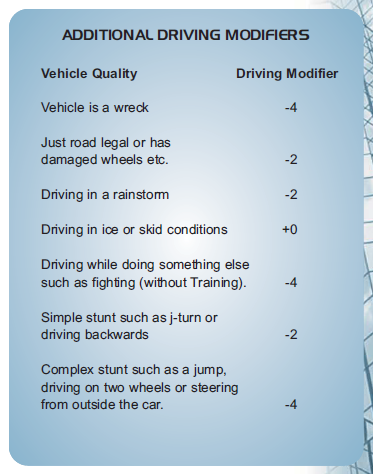
HACKING
You need the proper software to hack and a good connection. The amount of successes and difficulties depends on the level of security. Failure causes the GM to roll a secret d100 they have to roll under the percentage to activate a trace and get security after the hacker. There's no penalty for jacking out before you get caught.
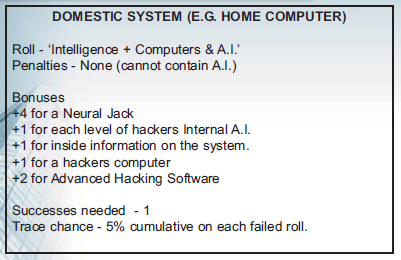
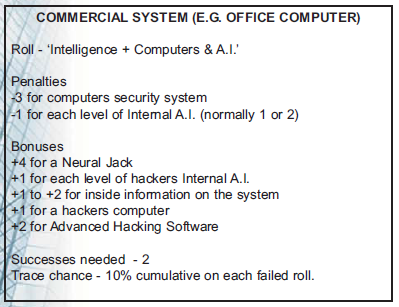
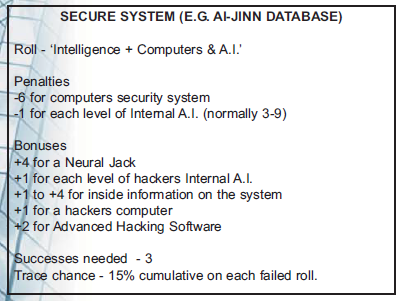
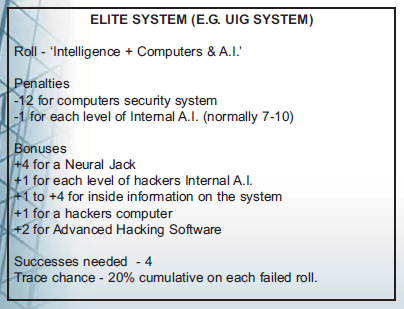
Okay one big point in this game's favor is that the rules aren't super complicated at the base. They take up 13 pages and they're refreshingly brisk and comprehensible. The book also does a good job of formatting and making it easy to parse and get what you need.
CHAPTER FIVE: Character Advancement
The mission is complete and it's time to reap the benefits! Character advancement comes in two forms: experience and rank points.
Rank Points are how well the Agent has done in the eyes of the UIG and their corporation. You don't get a promotion without impressing the UIG. Now, the UIG doesn't like the corporations and it certainly doesn't like its Agents. However, the UIG can't just ignore people they don't like due to backlash and recording instruments monitoring its officers. As a result, Agents do get promotions in Rank if they can provide proof of their deeds and pass an interview though the UIG will be stingy with handing out Rank Points.
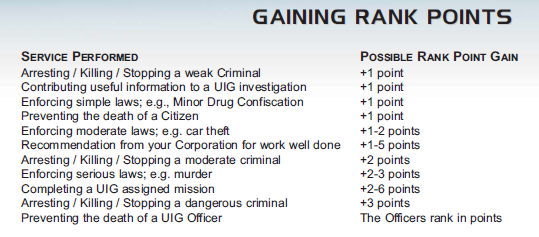

Gaining Rank is A Good Thing. Higher rank means more access to more licenses, more privileges and more money made per mission. Someone with Rank can command a non-UIG person two Ranks lower than them (one rank if in the same corporation). Ultimately the UIG have special authority over everyone with the exception of a specialist with special authority (a bomb disposal technician, for example). Ultimately, players should not surpass Rank 8/10 because past then we get into Running The Corporation. Agents start play at Rank 1. The GM should feel free to adjust gain of Rank Points as they see fit.

You can lose Rank, however. The easiest way to lose Rank is to get caught committing a crime or by acting irresponsibly. Remember how easy it is to kill a civilian? It's very easy to tank your rank with mass murder or fatal collateral damage, so make sure you have non-lethal options or punch to knock them out. Alternately, do not get caught. Your accumulated Rank Points will have the points deducted for your misadventures and you can lose Rank levels (remember, the UIG will drag its feet giving you Rank Points but will gladly take them away). If you hit -4 Rank level, you are classified as a criminal and Depersonalized. Being Depersonalized is a very bad thing: you are no longer protected by any laws and are fair game to anyone who might want to do something to you.
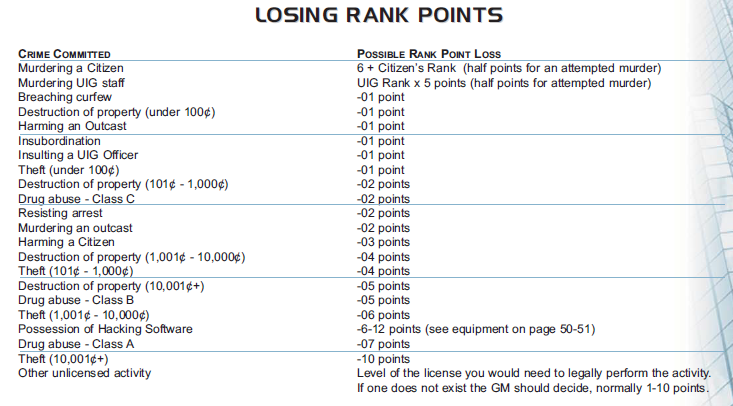
Experience Points are simply gained from playing the game and can be used to advance the character. You should get 3-5 experience points a session (or roughly 1 point a hour). You can adjust the gain of XP, but you can't punish players by taking that away (you can take other things away). XP totals are used to determine levels which are basically arbitrary ways to measure an Agent's combat effectiveness and how suitable certain threats are to them.
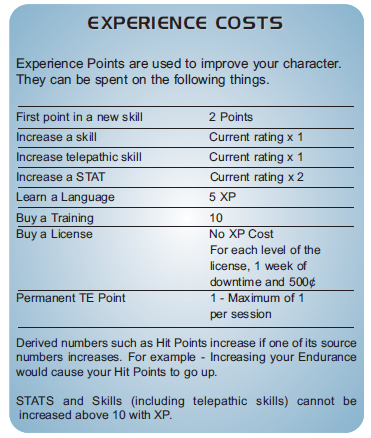
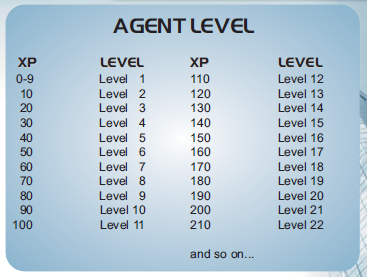
THE CARROT
Payment is simple. Upon completion of a mission and depending on success, the base pay is at least Corporation Pay Rate times Rank. Depending on how things go and how important the mission was, the GM can add a bonus of 0 to 100% of the base pay.
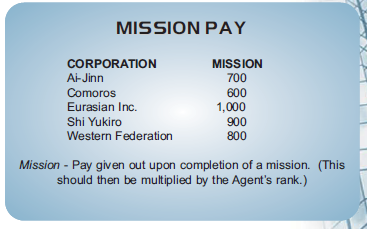
But that's just straight credits. Corporations can't pay the Agents in Rank points and will sometimes ask the Agents to do highly illegal things the UIG can't know about. It's very hard for a corporation to cook the books for rank so instead they'll pay the Agents under the table for doing things discretely.
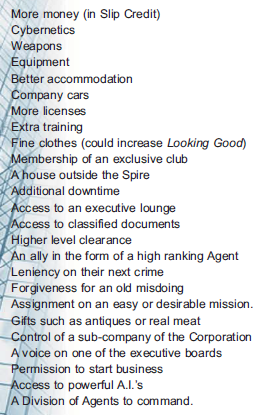
Other rewards can come in various forms depending on how the mission went and what it was about. The Agent can regain Conviction for certain deeds, gain new Contacts they can lean on, get a mission-related reward or just give them general goods and perks.
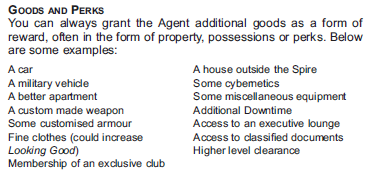
THE STICK
But of course not all Agents are good children who do what they're told. Sometimes you have to punish an Agent or have the corporation rein them in. Basically, the punishment has to fit the infraction and depends on a variety of factors. You should not make the Paladin fall for accidentally giving an orphan a head cold. Factors to consider:
- Agent's Rank
- Nature of mistake
- Past achievements
- Agent's loyalty
- Past indiscretions along these lines
- Corporate policy
- Agent's relationship with higher-ups
- Value to corporation
- How much the disciplining officer likes the Agent
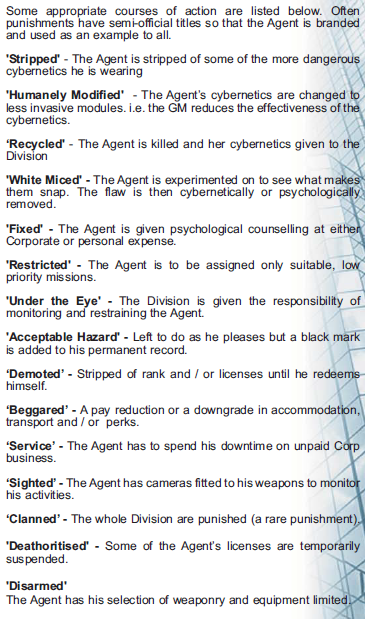
DOWNTIME
Downtime is the other means to advance your character. After every mission (or 2-3 sessions), the Agent should at least get a week off to cool off and do something productive besides a mission. Basically, the following options take at least a week and happen off-screen between games with GM approval.
- Regain Conviction: clear your head, get some good R&R and get all five points back.
- Skill training: practice for a week and get 2 free XP a week that can be spent on improving the trained skill (or reducing the price).
- Contacts: make friends. Get 4 points a week to spend on contacts as you see fit, making new ones or improving relationships. Contacts have a rank between 1 (vaguely friendly) and 10 (best buds) and can be used in certain rolls to lean on them for info or services.
- Earn money: get 500c a week from whatever means you see fit (like low-level low-worry missions or freelancing). This money might be multiplied by your rank.
- Workshop: improve the Condition of an item by 1 point per week spent tinkering with it. You have to have at least 5 in the relevant skill and spend a certain amount of cash to represent supplies used to tinker.
- License training: spend a week and 500c a week per license level to improve a license or get a new one. Basically you're going to classes, getting certified and passing tests.
That's it for mechanics and character advancement. NEXT TIME we'll rewind back to chapter 1 and learn how to make characters.
CHAPTER ONE: Character Creation
Original SA post
CHAPTER ONE: Character Creation
The first thing you need to do is sit down with your GM and figure out if you're playing a cross-corporation team or all working for the same company. The former is totally possible and is often formed with UIG oversight. A group of Agents is called a Division and every Division has a Division Leader. The second thing you want to do is pick someone to be a Division Leader. The DL is in charge of giving orders and accepting responsibility (translation: get one extra Rank Point at the end of every session but run the risk of being the one with the most to lose). The third thing you need to do is take note of all of the free stuff you automatically get as starting equipment.
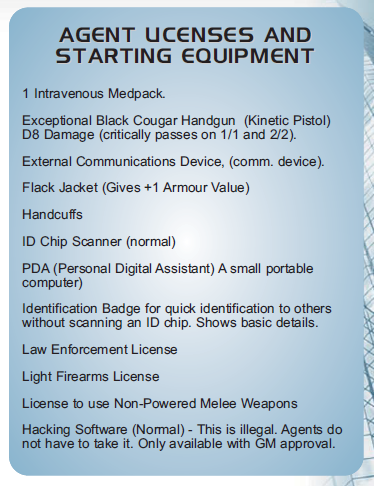
How to Build A Character
- 1: Pick your Corporation and note the benefits that come from your corporation.
- 2: Come up with a character concept and a profession. You should also pick a skill that will be crucial to your profession.
- 3: Assign stats.
- 4: Calculate extra features.
- 5: Assign skills.
- 6: Pick two trainings.
- 7: Spend 8 points on licenses.
- 8: Purchase equipment. Your money to spend depends on your corporation.
Step One
Your Corporation gives you free bonuses depending on their main areas of focus.
- Ai-Jinn Agents get an ID chip that can be switched to a fake ID that has an in-depth history and corroborating evidence to make them seem like a real person. Ai-Jinn Agents get the least amount of tangible goodies but being able to easily fake your ID like that is pretty important.
- Comoros Agents get +10 Telepathic Energy points, increase TE point regeneration, free Telepath training and the ability to burn HP for TE.
- Eurasian Incorporated Agents get an expense account they can bill mission-related things to. Be warned: EI accountants are very good at scrutinizing charges and catching fraud.
- Shi Yukiro Agents get a free katana, training in using Powered Melee weapons and a Powered Melee license. When the Agent is trusted enough they also get access to ion weapons, deadly and devastating monoblade weapons.
- Western Federation Agents get masterwork guns that crit hit on double ones to double fours. They also get 10% off the price of guns purchased through the company, free weapon licenses (heavy firearm, light firearms, offensive equipment 1 and tactical firearms), chip-checkers added for free on their guns and they learn WF Military Sign.
Basically just talk to the other players and the GM about what you want to do and what role you want your character to play. The game also includes questions you can ask yourself to flesh out your character. You should also have a skill in mind that is integral to your character.
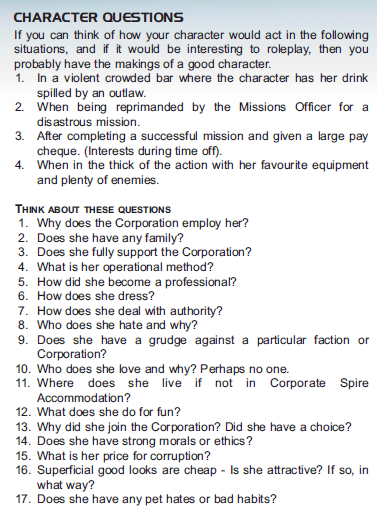
Step Three
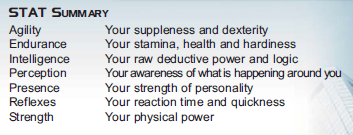
Stats range from 0-10 with 0 being unusable and 10 being the peak human potential. 5 is human average. Agents cannot start play with a Stat below 5 or above 10; they were hired because they are average or above average in all forms. You can assign stats one of two ways: all stats are 7 and you can reduce one to pump up another or start all stats at 5 and spend 49 points to increase a stat at one point an increase. This is essentially the same thing. It's possible to take stats above 10 but it requires cybernetics, augmentations or drugs.
Step Four
- Agents have HP equal to Strength+Endurance+20. An Agent with 7s in everything has 34 health. There are other ways to increase health besides boosting stats but you have to go looking for them.
- Rank and Level start at 1.
- You get Telepathic Energy points equal to Presence+Perception+Intelligence+10. These are used to fuel telepathic abilities. Other steps in character creation can boost this pool.
- Movement is equal to Strength+Endurance+Agility.
- Internal AI starts at 1.
- Starting AV is 0, not counting your free flak jacket.
- Your defense is equal to your Close Combat skill but we haven't picked skills yet, so.
- You have 0 EXP and 10 Rank Points.
- You have 2 Conviction Points.
- The Agent knows all languages of their corporation plus they can pick one language from another corporation. Agents can never learn Military Sign unless they're in the Western Federation.
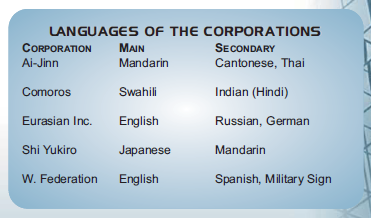
Step Five
Skills! You don't have a pool of points to assign skills, instead you have slots to fit the skills you want into. The only limitation here is that your Professional Skill must be 7+ but this is a good thing. A professional skill can't crit-fail and if you roll any doubles on a success it's a critical success. Skills range from 1-10 and can't go above 10 naturally (meaning you need augmentations).
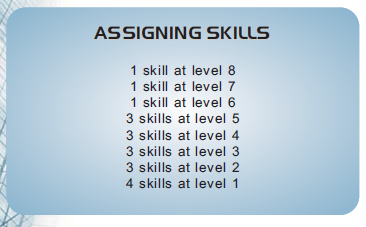
Skill List
- Arts and Culture: Covers everything that isn't science-based and requires knowledge. When you put points into A&C, you also should pick a specialty subject that gives you +4 to it while anything else is base A&C.
- Assess Tech: look at a shiny, unfamiliar thing and figure out what it does.
- Athletics
- Attitude: any use of charisma or application of personality.
- Business
- Close Combat: you should at least have 1 point in this.
- Computers and AI
- Corporate Knowledge: applies to all companies and the UIG.
- Crime: also used to pick locks and pick apart crime scenes for clues.
- Cybernetics and Robotics
- Drive
- Heavy Firearms: also includes maintenance of.
- Light Firearms
- Looking Good: Carrying yourself to walk the walk.
- Lying/Acting: can also be used to coerce info out of people.
- Mechtronics: electronics, mechanics and nanotech.
- Medicine
- Observation: AKA perception.
- Pilot
- Psychology: give counseling, also covers the social sciences.
- Science
- Stealth: specifically hiding from senses. Hiding from robots or detectors might require mechtronics.
- Street Culture
- Support Weapons: mostly explosives.
- Tactical Firearms
- Telepathic Skills: must be bought separately.
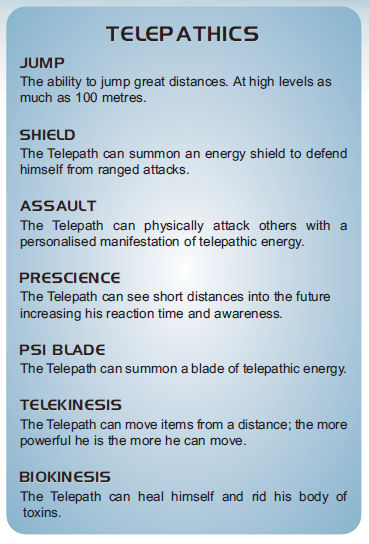
Step Six
Trainings are specific areas of expertise that you might have to meet a prerequisite for. Some of these are character creation only and the rest can be purchased with experience points.
Noncombat Trainings
- Animal Skills: automatically control animals in normal situations. You can control up to your Presence in animals at any time. Might require rolls in moments of duress or to make the animals do certain things. This doesn't sound so hot but lemme tell you one word: cyberwolves.
- Aptitude: don't crit-fail on doubles when using an untrained skill. Extra bonus: add 1d6 to a roll once per session.
- Command: Add your Rank to appropriate circumstantial rolls to boss people around.
- Domestic Trade: you know how to do A Thing that you can make skill checks for. Alternately, the Thing you know can add a +2 circumstance bonus to a skill roll if relevant (such as locksmith).
- Field Surgery: heal up to your medicine in HP on a patient in any environment, no roll required, at the cost of 1 round per HP restored. You can only use this once per scene per person and you can't try to heal the same injury twice.
- Hacking
- Interrogation: higher XS means better information extracted.
- Jury-Rigging: Intelligence+Mechtronics roll to build something from nothing with bonuses or penalties depending on what you can scrounge up.
- Meditation: get double your TE regeneration rate when meditating.
- Surgery: required to reattach limbs and replace/fix organs, doesn't apply to installing cybernetics. It can restore some HP, but the purpose isn't to do that, it's to fix a substantial problem.
- Surveillance
- Survival: just shrug off not being in a good place.
- Stone Cold: restore Conviction lost to trauma on a roll of 1-5 instead of just 1.
- Telepath: be able to buy/use telepathic skills.
- Telepathic Adept: +20 TE, character creation only.
- Underground Operations: you know how to get things from the black market. You still have to pay for them though.
- Advanced Disarm: +4 to disarm.
- Assassinate: if you can sneak up on a target undetected, automatically KO them or put them at 0 HP with a single strike.
- Defensive Fighting: Take a penalty to hit and add half that to your AV. Close combat only.
- Disarm and Attack: get a free attack with the weapon you're disarming, even if it's ranged. You can't disarm heavy weapons like this without Strength 10.
- Droid Hunter: add your Cybernetics and Robots skill as damage against robots.
- Dual Weapon Fighting: fight with two weapons without penalties. Yes this applies to guns. You have to pick the type of weapon you're fighting with.
- Gun Melee: use a light or tactical firearm in melee with no penalties.
- Hail of Missiles: double the amount of thrown weapons you can chuck at one time, requires Thrown Weapon training.
- Mastered Weapon: add the level of XS to a type of weapon to deal that much extra in damage for the first dice rolled. This applies to machine weapons too; only the first damage dice gets that bonus.
- Powered Melee: without this, all doubles when flailing around a plasma sword or chainsaw are critical failures and you can't critically hit.
- Quick Draw: +4 to initiative when drawing your weapon at the start of a fight. If it's a lighter weapon, +6.
- Restrain: quit fucking around with the grappling rules and tie them up.
- Scything Strike: a kill with a tactical or heavy close combat weapon cleaves and gives a free attack against another target in range. You only get this bonus once.
- Thrown Weapons: throwing bladed weapons deals a bonus of half strength damage on a hit. You can throw 2 light weapons or 1 tactical/heavy weapon a round. This training also gives +4 to hitting by whipping blunt objects like bricks or bottles.
- Twin Psi Blades: summon two psi blades to fight with for one action at the cost of double the TE spent. For maximum effectiveness you need Dual Weapon Fighting.
- Unarmed Combat Specialist: never lose your defense when fighting unarmed against an armed opponent and add a d4 to any unarmed damage dealt. Plus you can block without a weapon.
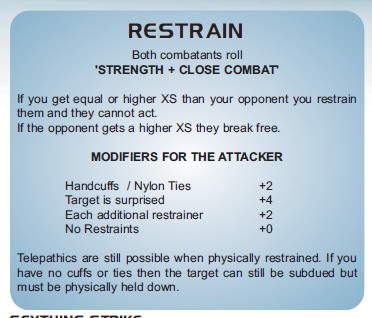
Step Seven
Licenses are good for getting away with things. You have permanent licenses (which cost 500c and a week of work per level) or a temporary license which is a simple down payment. You can also get licenses as an award from your corporation. The point of licenses is that they can be used to do different, new things outside of normal operations. You get 8 points to spend on licenses as long as you meet the requirements like skills or Rank.
Equipment Licenses
- Combat Drug License (2): Use all combat drugs.
- Cybernetic Animal License (1)
- Heavy Firearms License (3)
- Light Firearms License (1): Agents get this for free.
- Offensive Equipment (1/2): comes in the form of small or medium damage capacity or high-powered explosives.
- Powered Melee License (2)
- SatBlanket License (2): a SatBlanket is an apparatus that blocks satellite view.
- Security Bypass License (2): A security bypass device pops all sorts of locks. You need this license to do that legally.
- Specific Equipment License (3): own and operate specific items, mostly weapons.
- Tactical Firearms License (2)
- Customs License (4): bypass customs and immigration authorities.
- Detainment License (2): detain someone of lower Rank than you for 12 hours, Agents or Citizens or UIG. Abusing this license has bad repercussions.
- Privacy License (5): Hide personal details on your ID chip from people of lower Rank than you.
- Public Appropriation License (2): take stuff from lower-ranking Citizens in the pursuit of the mission. This has to be a person on the street, you can't enter someone's house. The corporation will generally compensate the person for their loss.
- Search License (Commercial) (2): okay now you can enter places without a warrant, specifically commercial properties owned by citizens. You still can't just take stuff you need unless you have the above license.
- Search License (Domestic) (1): now you can enter homes.
- Telepathics License (1-10): this license allows you to legally use a Telepathic skill equal to or less than the rank of the license. This license covers all powers.
- Termination License 1/2/3 (2/5/8): you can legally terminate Outcasts/lower-ranking Agents/lower-ranking Citizens in the line of duty. These are not given out lightly. If you're gonna murder, you better try to not get caught.
- Traffic License (2): fuck with traffic in the line of duty.
- Vehicle License Domestic/Military (1/3)
- World Database Access (4): access the UIG's world database to look for DNA and fingerprints and profiles. You can't look at people who outrank you.
- Biohazard and Toxin License (3): manufacture/carry class B, C or D drugs/toxins/biohazards with no questions asked. If it's an illegal substance, this license will only let you carry it for good cause (like disposal).
- Bounty Hunter License (1)
- Cyberneticist License (2): perform cybernetic installations but you have to record what you've performed with the UIG.
- Medical License (1): legally practice medicine as a professional doctor outside of first aid (doctoring/nursing, for example).
- Law Enforcement License: free for Agents. You can investigate criminal activity for the UIG. You can ignore the need for some licenses if you can argue and provide proof that someone is in imminent danger (for example, you cannot take food from a store because you feel you are at risk of dying of hunger unless you're literally starving).
- Preacher's License (1): orate in public as long as there are less than five complaints per hour and you don't swear or incite disobedience.
- Robotics License (1): legally build and program droids.
- Vending License (1): legally sell goods with a tax of 20% on profits paid back to the UIG.
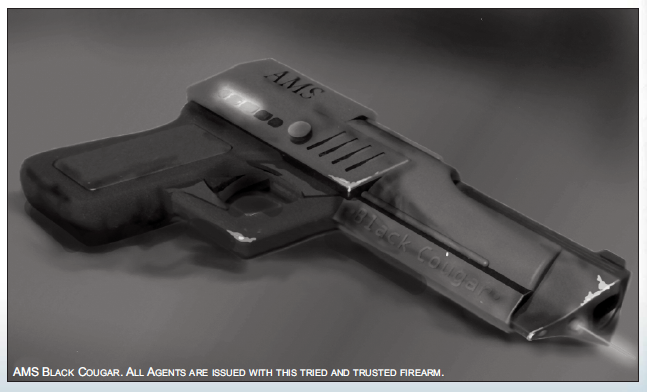
Step Eight
Buy equipment with a starting budget depending on your corporation.
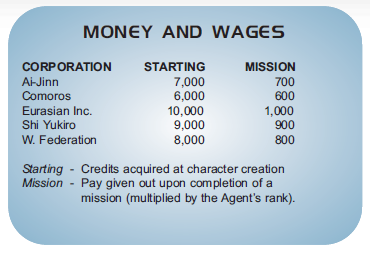
That's all there is to it, you're done! I helped some friends make some characters as practice exercises but if anyone wants to contribute an idea, NEXT TIME I'll build one or two to round out the group.
CHARACTER BUILD EXAMPLES
Original SA post
CHARACTER BUILD EXAMPLES
I won't be including the things the characters already get for free.
Ai-Jinn Stealth Specialist:
Caleb's idea is an Ai-Jinn Agent who infiltrates and has stylized himself to fight and appear like the Chinese hopping vampire.
HP: 34
Agility: 8
Endurance: 6
Intelligence: 6
Perception: 6
Presence: 7
Reflexes: 8
Strength: 8
Languages: Mandarin, Cantonese, Thai, Japanese.
Stealth: 8 (Pro Skill)
Athletics: 7
Close Combat: 6
Crime: 5
Light Firearms: 5
Attitude: 5
Corporate Knowledge: 4
Cybernetics: 4
Observation: 4
Street Culture: 3
Support Weapons: 3
Tactical Firearms: 3
Assess Tech: 2
Arts/Culture: 2
Looking Good: 2
Drive: 1
Lying: 1
Heavy Firearms: 1
Medicine: 1
Computers: 1
Trainings: Assassination, Underground Operations
Licenses: Security License, Powered Melee License, Vehicle License, Domestic License, Detainment License
Gear: Injector pistol, tiger claws, knockout grenade, customized reinforced clothing, field shield, lockpicks, stealth suit, suppressant gel, more handcuffs.
Western Federation Celebrity Agent
My friend Peter came up with a WesFed Agent who has a good public presence as an actor and celebrity on the missions that get turned into entertainment.
HP: 30
Agility: 9
Endurance: 5
Intelligence: 6
Perception: 8
Presence: 10
Reflexes: 6
Strength: 5
Languages: English, Spanish, Military Sign, Mandarin.
Lying/Acting: 8 (Pro Skill)
Looking Good: 7
Crime: 6
Drive: 5
Heavy Firearms: 5
Light Firearms: 5
Observation: 4
Stealth: 4
Tactical Firearms: 4
Street Culture: 3
Support Weapons: 3
Psychology: 3
Science: 2
Business: 2
Assess Tech: 2
Corporate Knowledge: 1
Computers and AI: 1
Close Combat: 1
Arts and Culture: 1
Training: Command, Interrogation.
Licenses: Detainment, World Database License, Search License (Domestic), Preacher's License.
Gear: Light combat armor, insulated shield, save the rest.
Shi Yukiro Bōsōzoku
My character, a gear-head who runs around with melee weapons and drives gaudy vehicles for the team's transportation.
HP: 34
Agility: 7
Endurance: 7
Intelligence: 9
Perception: 7
Presence: 5
Reflexes: 7
Strength: 7
Languages: Japanese, Mandarin, Russian.
Drive: 8
Mechtronics: 7 (Pro Skill)
Close Combat: 6
Light Firearms: 5
Cybernetics: 5
Medicine: 5
Athletics: 4
Tactical Firearms: 4
Assess Tech: 4
Crime: 3
Computers and AI: 3
Street Culture: 3
Support Weapons: 2
Heavy Firearms: 2
Pilot: 2
Corporate Knowledge: 1
Looking Good: 1
Stealth: 1
Trainings: Combat Driver, Jury-Rigging.
Licenses: Vehicle License (Domestic), Vehicle License (Military), Robotics License, Tactical Firearms License, Bounty Hunter's License.
Equipment: Machine pistol, combat chainsaw, stun pistol, light combat armor, heavy field shield, toolkit (advanced mechtronics), two cutting torches.
NEXT TIME: Chapter Two, the equipment chapter.
CHAPTER TWO: EQUIPMENT
Original SA post
CHAPTER TWO: EQUIPMENT
Before we get into weapon charts and such, we have to talk about a mechanic that frankly isn't very fun: Equipment Conditions. I would just cut this all out and not use any of it when playing. Basically when you buy your average gun or tool or vehicle, it's in new quality (condition 10). A Condition 10 item only critically fails on a double 10 roll. The GM can also decide that a critical failure will drop the condition another level, meaning it critically fails on a double 10 or double 9. The worst state an item can be in is Condition 1, meaning it can't critically pass and it critically fails on all doubles and falls to pieces. Normally a company won't sell people items that are in substandard condition unless someone insists or haggles. If you buy something of a lower condition, the price is reduced. Alternately, you can buy superior items that crit hit on higher doubles or have other benefits for an altered price (like making the weapon compact, increasing the clip size, etc.).
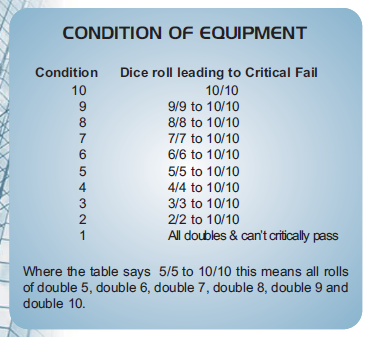
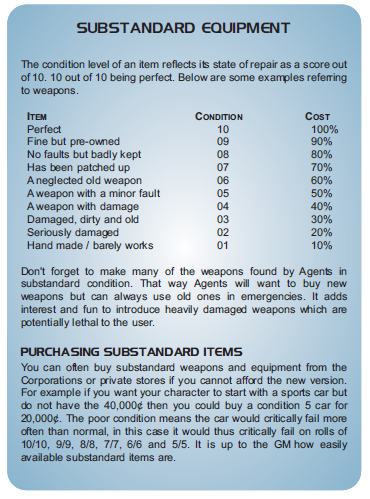
There are two ways to improve equipment. First is to bring it to someone and pay 10% of the item's new cost to increase the condition by 1 point. Essentially you can buy a condition 5 item for half off but if you want it to be new you have to pay the other 50% in repair costs. Second, you can use downtime to tinker in your workshop and gain one point a week for 5% of the price. The repair rules are the main reasons that the deterioration rules aren't very good or worth including because downtime is better spent doing something else and no matter what you're paying the full price eventually or more than that in repairs. I'm skipping a little bit of these other rules but that's because I don't really like this system.
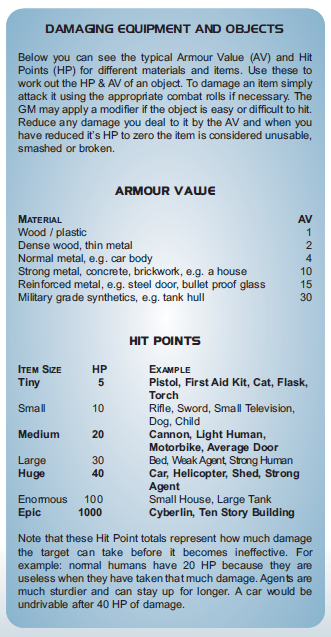
WEAPONS
These guns are common and available for sale from your corporation. You can also get rare or specialty weapons by buying direct from the manufacturer or by trawling the black market. Firearms come in Light (handguns, require 3 Strength to use one-handed but you're automatically STR 5, so), Tactical (sub machine weapons, rifles, two handed with 4 STR, one handed with 7 STR) and Heavy (biggest that can be carried, STR 6 to use two-handed, STR 10 to be used one-handed). Close Combat weapons come in Light (knives, brass knuckles, STR 3 to use and are really just one-handed), Tactical (swords and longer weapons, STR 4 to use one-handed, mostly one-handed unless specified) and Heavy (chainsaws, two-handed weapons, STR 6 to be two-handed and 10 to be one-handed). Rounding out the weapons are Support (grenades, explosives, mounted guns) and Thrown (you throw it but it doesn't explode).
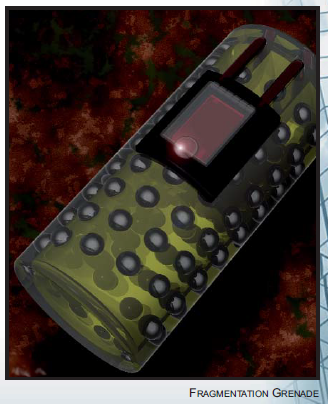
Weapons in Detail
- Close combat weapons ignore energy shields but not armor and you add a bonus of Strength as damage dealt. Holding a melee weapon two-handed doubles your bonus Strength damage. If you can hold a two-handed weapon in one hand, you only add the normal Strength bonus.
- EMP weapons only target active equipment (held weapons, energy shields, cybernetics). Anything not in use detects the EMP and automatically switches to a safe mode to automatically resist the pulse. EMP weapons only roll EMP damage and EMP damage is rolled separate for each item caught in the crossfire. If the damage exceeds the shielding on an item, the item shuts down and can't be used until it's repaired. All cybernetics have a shielding rating of 25.
- Thrown explosives have damage dealt depending on success or failure. A success means that you hit the target with full damage. XS of failure cuts the damage down.
- Weapons with an attack rate of 2+ can be fired at a slower rate to increase accuracy at the cost of less attacks. Forfeiting one attack gives you +2 to hit with all remaining shots with every sacrificed attack giving the others +2 to hit.
- Ion weapons are only available to Shi Yukiro Agents. Ion weapons are immensely dangerous, bypassing 10 points of armor value to attack but they're melee only. Their internal energy supplies mean it'll be centuries before they run out of juice and you need Powered Melee training to use it properly (otherwise all doubles are crit-fails). If you deal maximum damage with an attack, it severs whatever limb it hits.
- Kinetic weapons are guns. Most kinetic weapons use SMART rounds (Self Modeling Auto-loading Round Technology) in clips meaning that if you have one clip of SMART ammo it's compatible with any kinetic weapon that uses them. The big benefit of kinetic weapons is that a lot of them are immune to EMPs.
- Laser weapons can bypass energy shields if a round is spent to calibrate the laser before attacking. Laser weapons use energy cells.
- Machine weapons fire in full auto. You can pick as many targets as there are damage dice as long as the targets are close together, splitting up damage dice per target. Alternately, just shoot one target and get +4 to hit. You can't aim machine weapons.
- Plasma firearms bypass all armor but always crit miss on 8s, 9s and 10s. Crit misses deal half of the damage to the user in a backfire and the weapon stops working. Plasma close combat weapons don't have the same restrictions as their ranged counterparts, built sturdier. The only real restriction is that you need Powered Melee training to use them properly and they only bypass 4 armor.
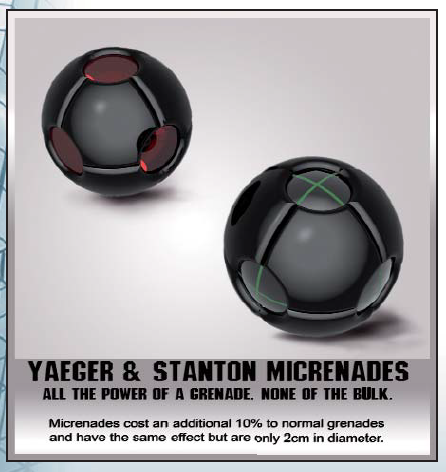
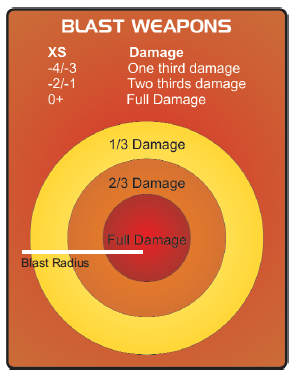
WEAPON LISTS
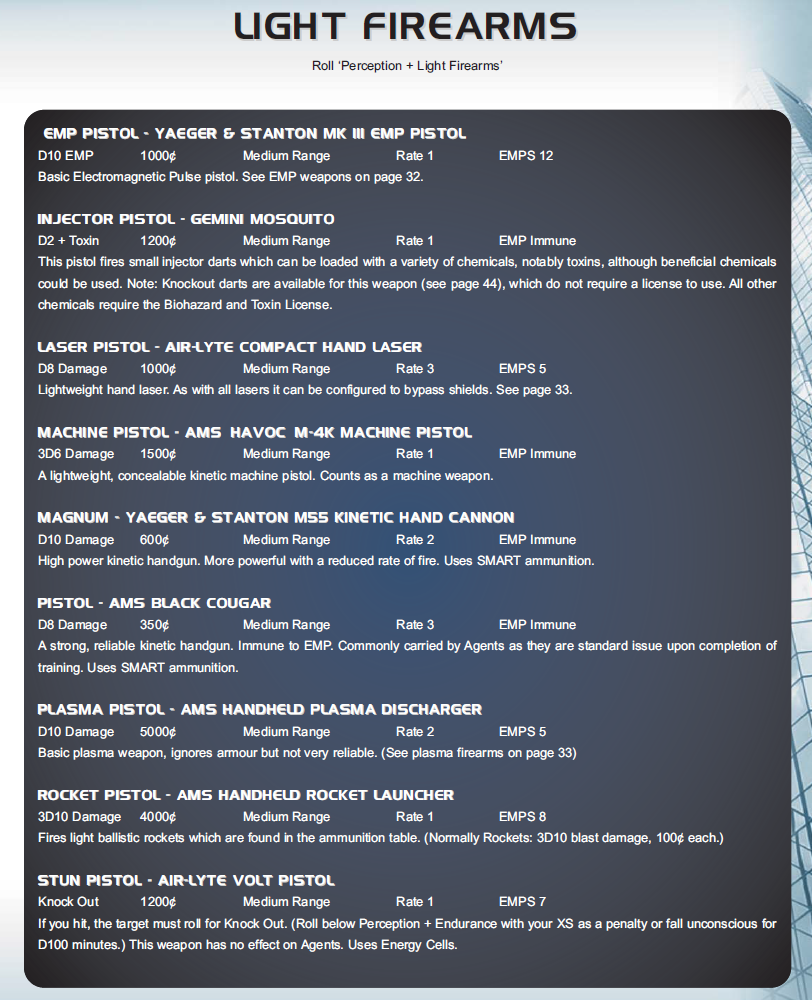
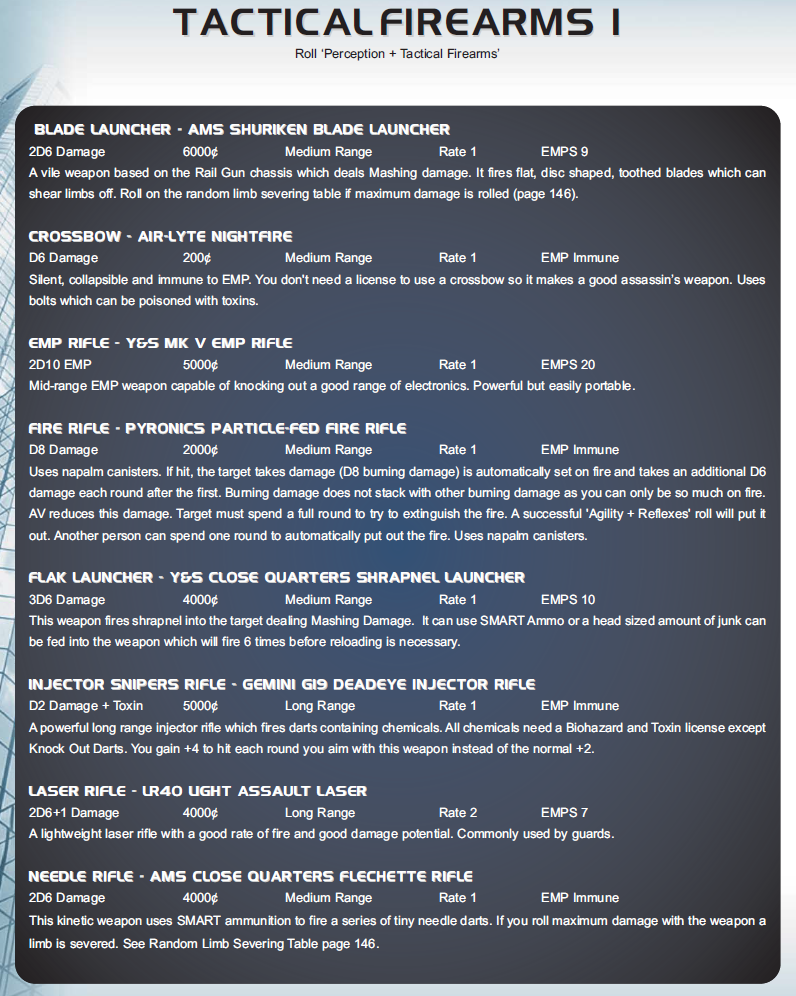
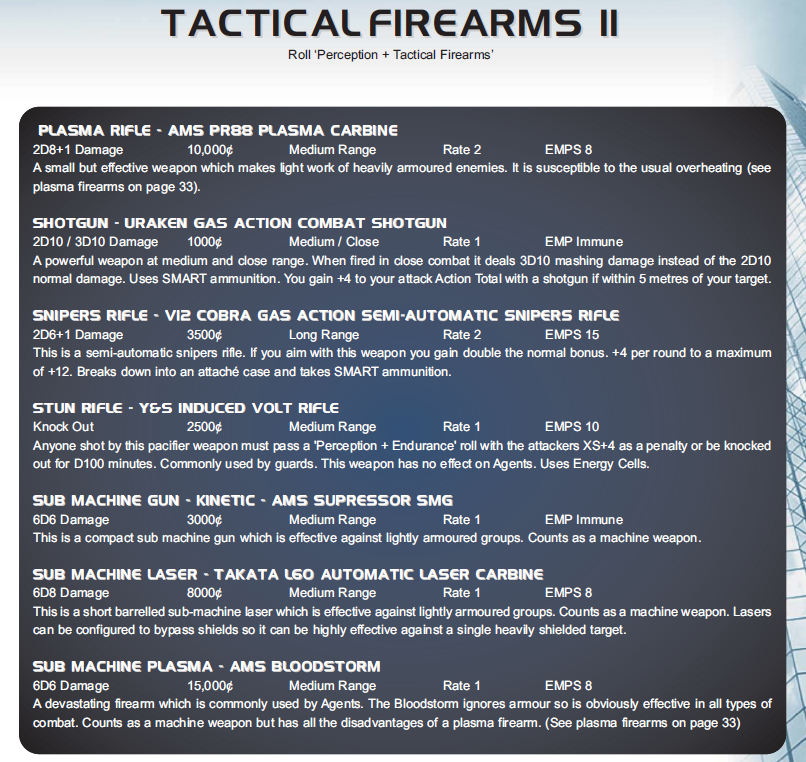
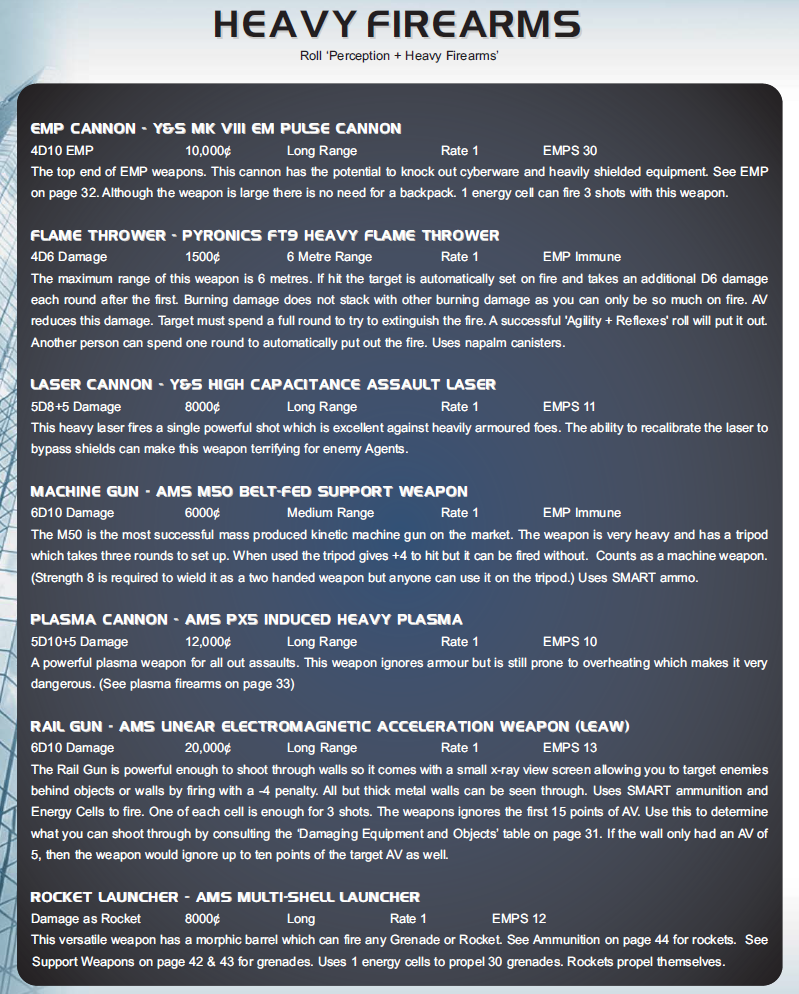
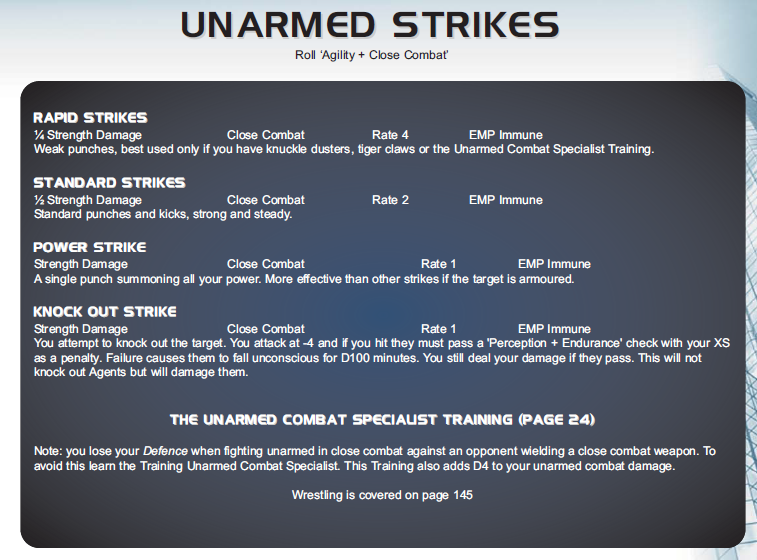
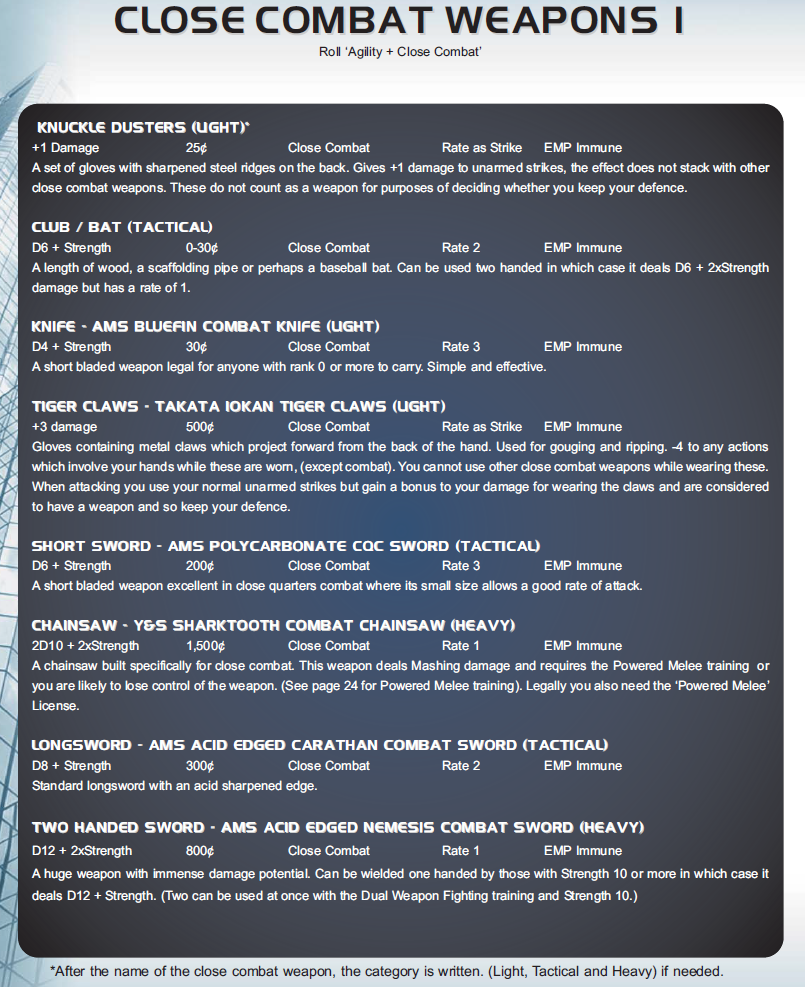
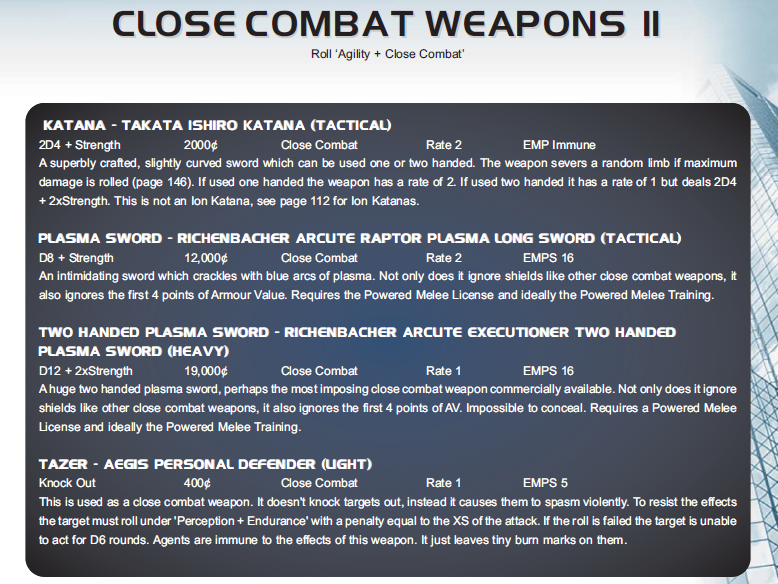
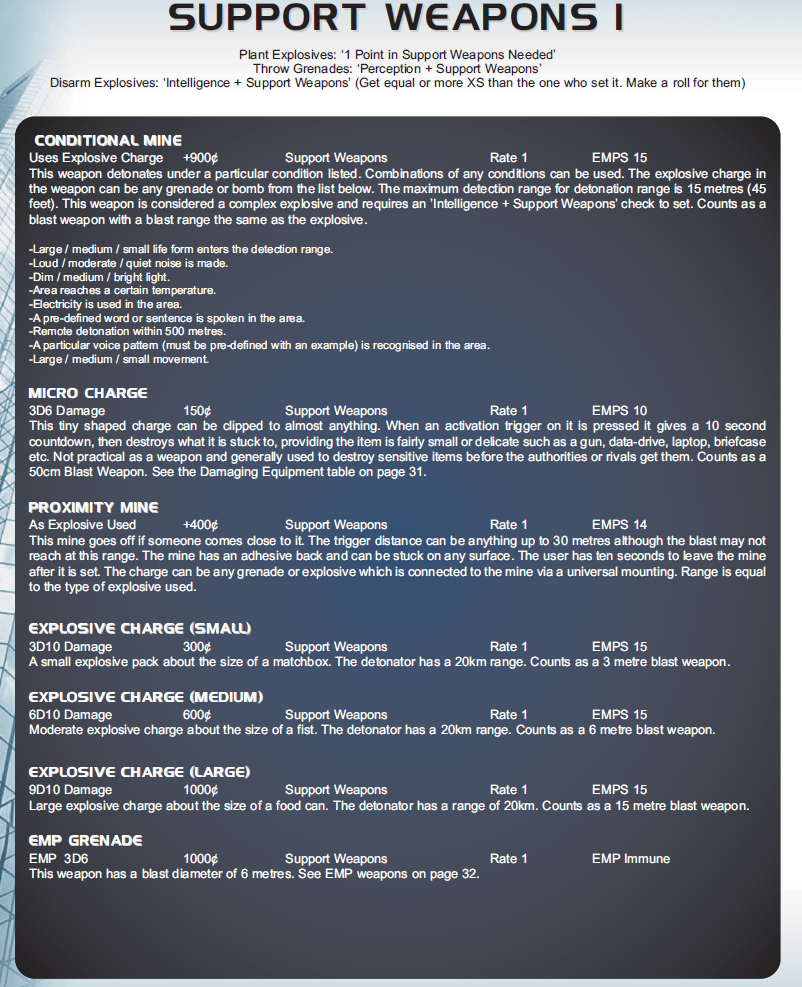
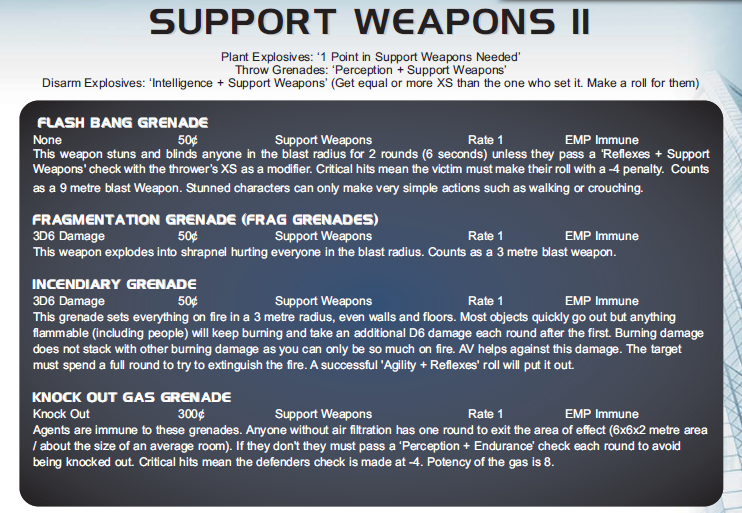
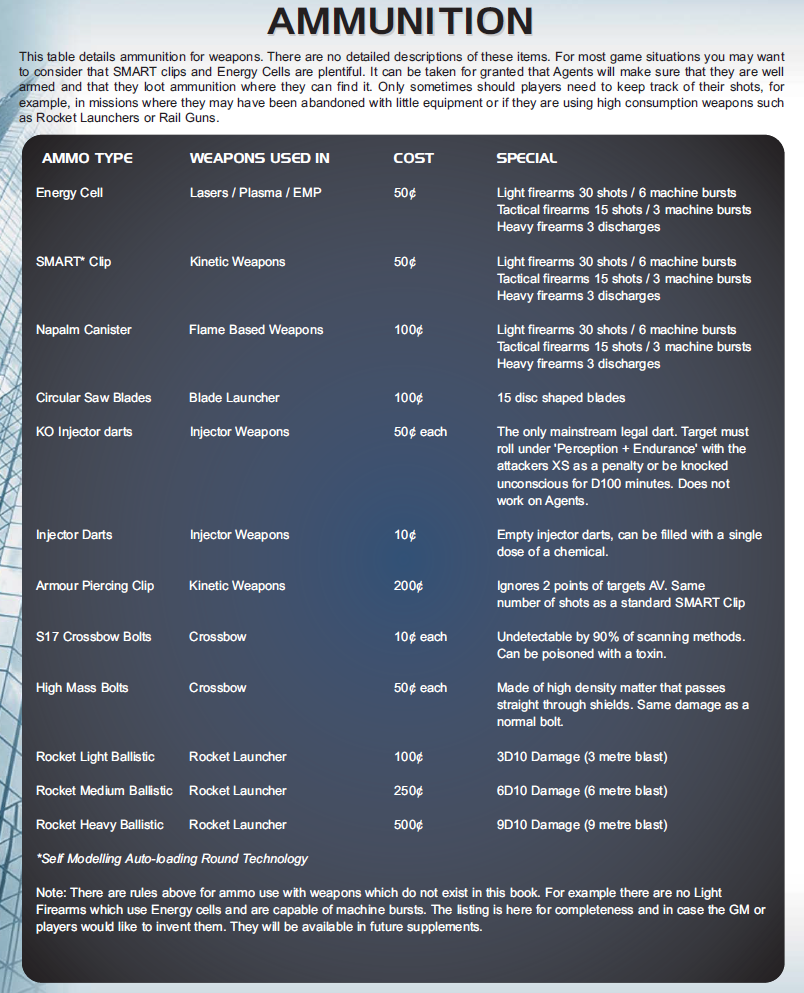
ARMOR
Armor has some simple rules. First, it reduces damage received in the area it's worn by a certain amount. Second, the armor values only stack if they're in different areas and not overlapped. A helmet, flak jacket and shield is 3 AV for the whole body. The except to this is cybernetic armor; cybernetic armor always stacks no matter where it's implanted. You can't have an AV higher than your Strength and some sets have a maximum Agility you can have while wearing the armor.
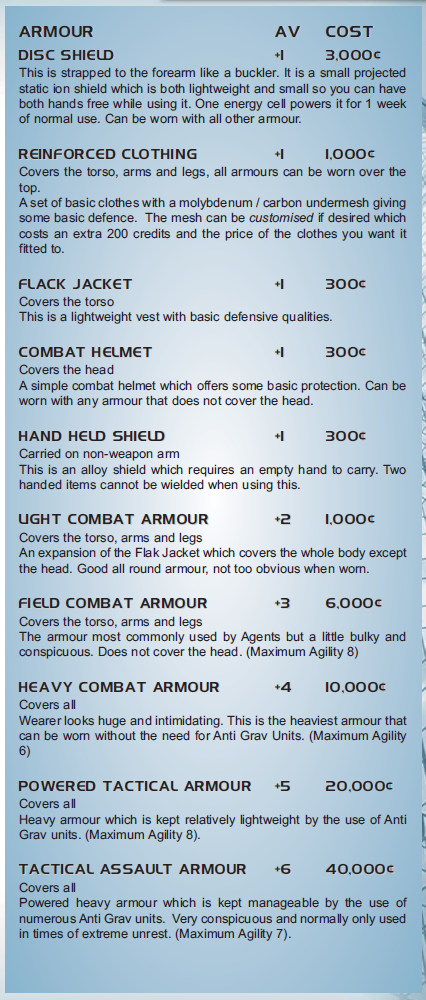
HARD ION SHIELDS
Hard Ion Shields are what I've been calling Energy Shields. A shield is maintained by a generator worn on your person that projects a visible field around you and stops high velocity objects. Inert objects or slow moving objects will pass through the field, so the shield stops lasers and bullets but a sword, a fist or a vehicle are not fast enough to make the shield react with stopping power. Also if you're a meter away from someone, the shield just plain won't react in time to deflect high velocity attacks. An Agent can only have one shield on at a time.
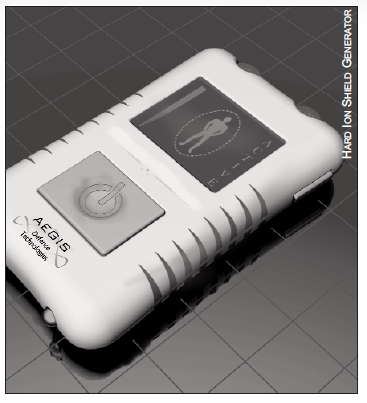
Shields have their own HP and will automatically deduct max damage that the attack can deal if the user is hit. For example: a Black Cougar handgun deals d8 damage, so the shield eats 8 damage. When the shield's HP reaches 0 or less, the field discharges and is depleted until it's recharged. A 20 HP shield is shot three times by the Black Cougar, so it takes 21 damage and shuts off. An active shield can take a total of double its HP to protect the owner; if the damage falls short of double but is more than the regular HP the shield simply turns off, if it's double or more the shield generator is destroyed and the owner takes the remaining damage. To recharge a shield, simply put it in a plug and let it charge 1`HP per minute.
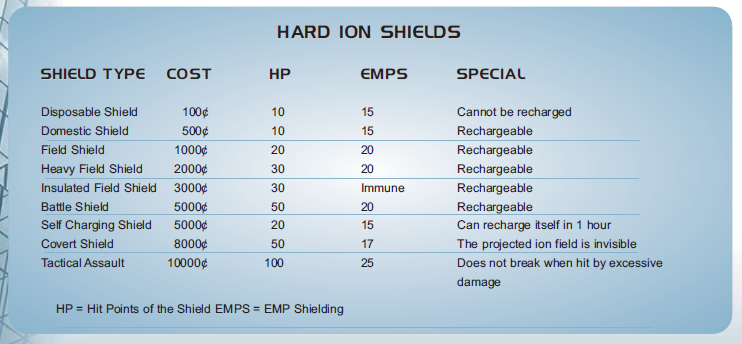
TOXINS AND DRUGS
A dose affects one target. A canister fills a 10x10x10 meter area and can be piped into ventilation. Potency indicates what kind level of filter will keep the substances from affecting the person in contact with them. Class D drugs are unrestricted, Class C are illegal in some territories, Class B are usable by select individuals and Class A substances are highly illegal and carry hefty punishment for possession. Certain licenses remove the legal risks of C and B but Class A substances are always super illegal.
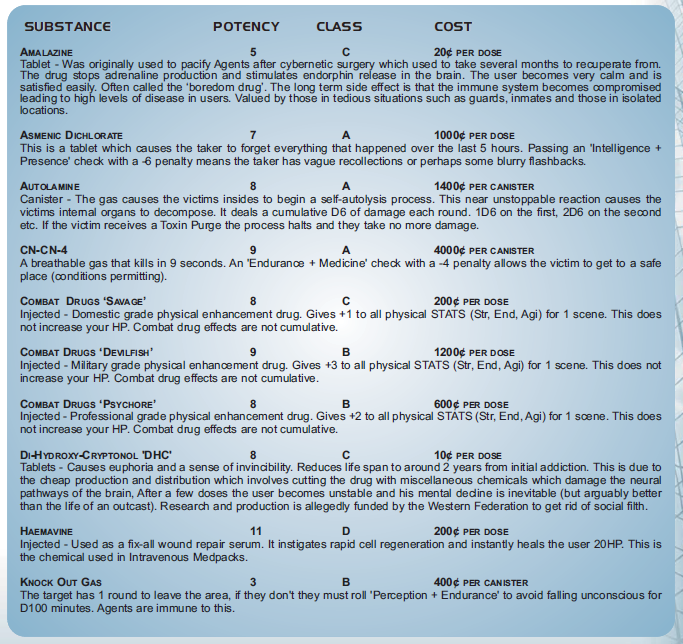
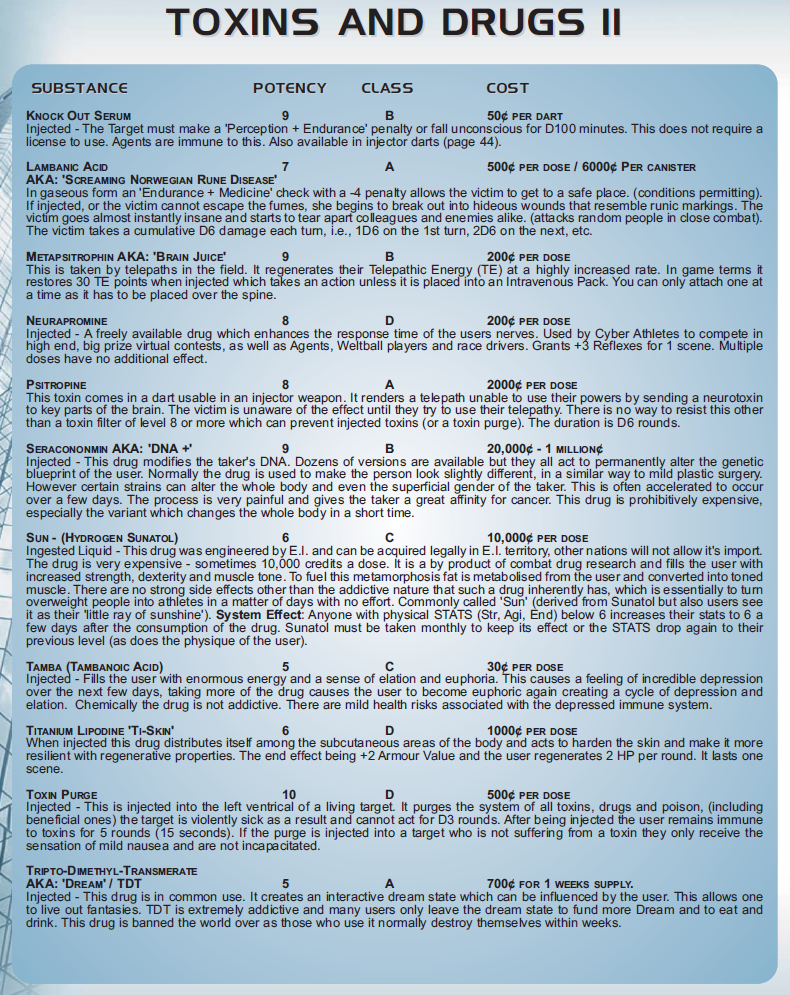
EQUIPMENT
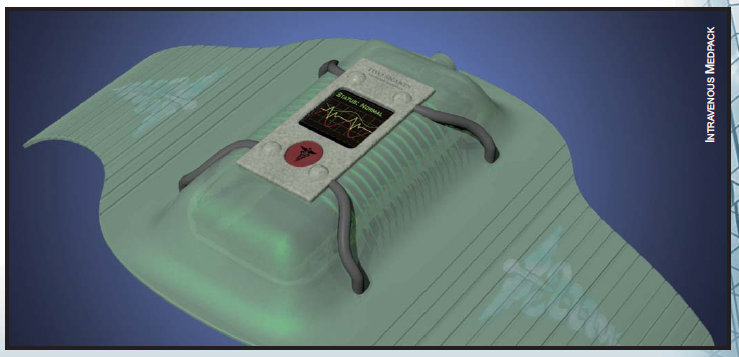
A lot of these items are self-explanatory. I'll be going over the ones that aren't.
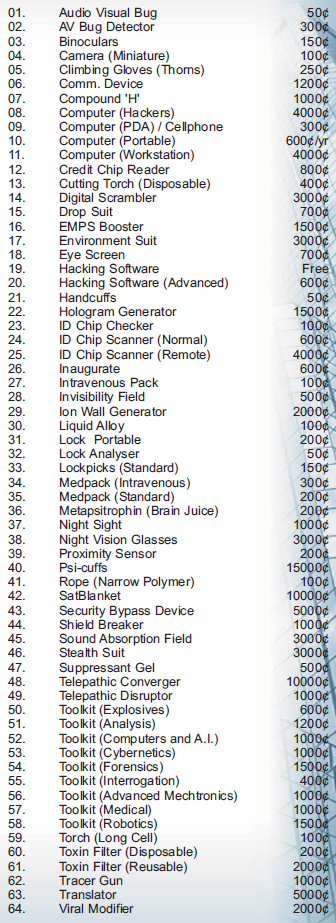
- Compound H: Compound H reattaches severed limbs. It's a spray can with enough of a dose to coat the stump and the base of the severed parts (one of the two should still be alive otherwise it won't work). Simply place the two parts together and the compound will foster rapid regeneration and help realign the nerves and veins and such. All it takes is fifteen minutes to get a limb back with no scarring. It also has a 60% success chance to attach a part from a different person.
- EMPS Booster: a small chip is slotted into an item susceptible to EMPs and will raise the EMPS of the item by 2 points by generating a field that helps resist EMPs. Most items can slot up to 5 of these chips before they stop adding benefits. Booster chips can also be slotted in cybernetics.
- Eye Screen: a computer screen that covers one eye, giving -1 Perception to wirelessly use a computer.
- Hologram Generator: it basically makes illusions of whatever you need and will last for three minutes before burning out.
- Inaugurate: An incredibly volatile acid that deals 20 damage per dose. Hard to use as a weapon due to its volatility and the fact that one container only carries 3 doses. Great for melting locks though.
- IV Pack: an empty pack you can load anything you need into. If you're running around with the needle in, you can have the pack empty into your bloodstream whenever you want and the drugs will kick in immediately. One use only.
- Invisibility Field: watch-sized, only lasts for a scene before it burns out.
- Ion Wall Generator: 500 HP ion wall that has a max area of 10x10 meters. The generator itself is 10 cm cubed and floats to project. Lasts for 10 hours before it burns out.
- Liquid Alloy: superglue in the form of liquid metal. Roughly the size of a soda can, the contents can be used to anchor things as strong as a weld and can be sculpted before the metal hardens in 10 seconds. 500kg of force is necessary to break the bond.
- Medpacks: the IV medpack has to be placed over the heart and only one can be worn at a time due to size. It's a free action to use the medpack and it also has a bio sensor that will automatically inject when the owner hits 0 points. Heals 20 points. A regular medpack has enough goodies to heal 20 HP plus the user's Medicine skill and takes one round to use. Both items only have a single use.
- Metapsitrophin: gives 30 Telepathic Energy points to the user. Needs to have the needle injected at the base of the spine and due to the placement only one can be used at once. If it's not in a pack, it takes an action to administer.
- Night Sight: night vision goggles, basically. The Sam Fisher kind.
- Night Vision Glasses: in glasses form but only lets you see in black and red.
- SatBlanket: a computer the size of a car battery that disguises everything in 30 square meters from satellite view, intelligently editing what the satellite sees instead of making a blank spot. Best used with a license.
- Shield Breaker: an energy grenade that deals 60 damage in an explosion. Despite its name, it can't break shields, only discharge them.
- Suppressant Gel: a better silencer, a gel that eats the sound of a light or tactical firearm and makes it truly silent.
- Telepathic Converger: it's a weird hat that gives you +2 to using telepathic skills.
- Torch (Long Cell): a flashlight with a thousand year battery life.
- Viral Modifier: a specially-designed retrovirus injected into the face that takes a week to change your face for a month. The face is designed on a computer and the instructions are given to the virus by a doctor/engineer. Said doctor/engineer is obliged to inform the UIG of people they sell these viruses to unless you bribe them.

PROCESS CHIPS
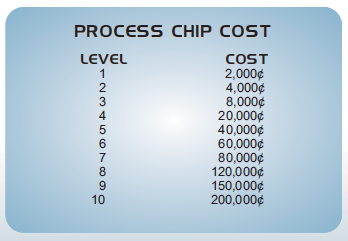
Let's talk about the hole in the back of your head. That hole, the process socket, is capable of slotting chips that provide you with a certain level of a skill depending on the chip. The basic process socket holds only one chip, can only take up to a level 5 chip and lets the info be fully accessible in a hour. The advanced process socket takes one chip, can take up to level 10 and readies the info in 5 minutes. The dual process socket has two advanced sockets. Process Chips are skills only and range from 1 to 10 with a variety of price. There are also Task Chips, which focus on one specific, narrow thing (interpretive dance, bar trivia, industrial lathe operation, 19th century culture, maps of Australia). All Task Chips are 2k each and give a flat 10 at the cost of being about that one specific thing.
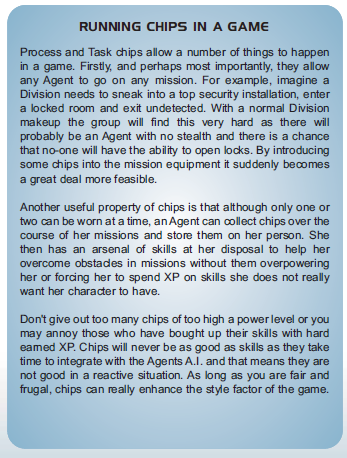
VEHICLES
I got more pictures, yo. Basically the thing I love about the rules for vehicle modifications is that you can pretty easily turn the party's vehicle into a truck covered in heavy armored plating capable of flying at 260 MPH thanks to its antigravity generators. This is of course assuming you have the money to create a flying brick of a truck.
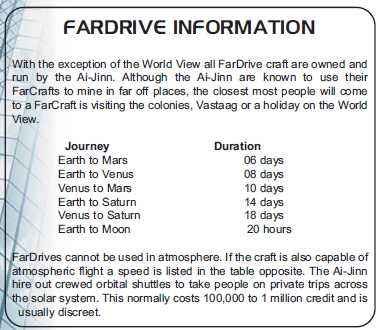
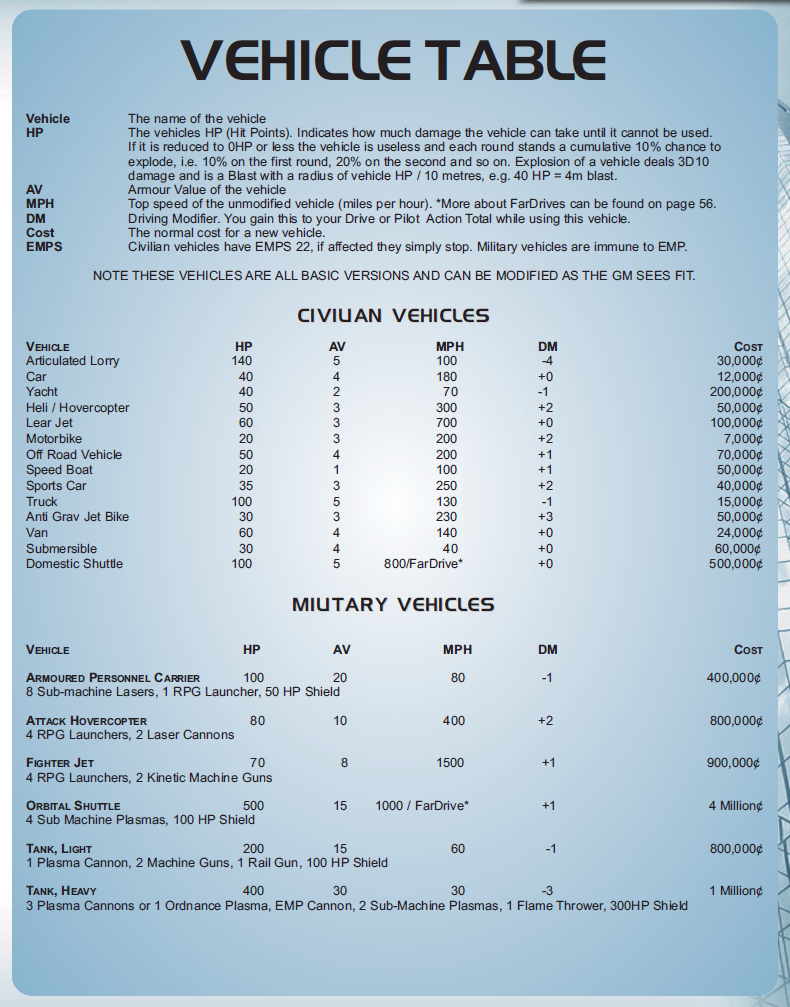
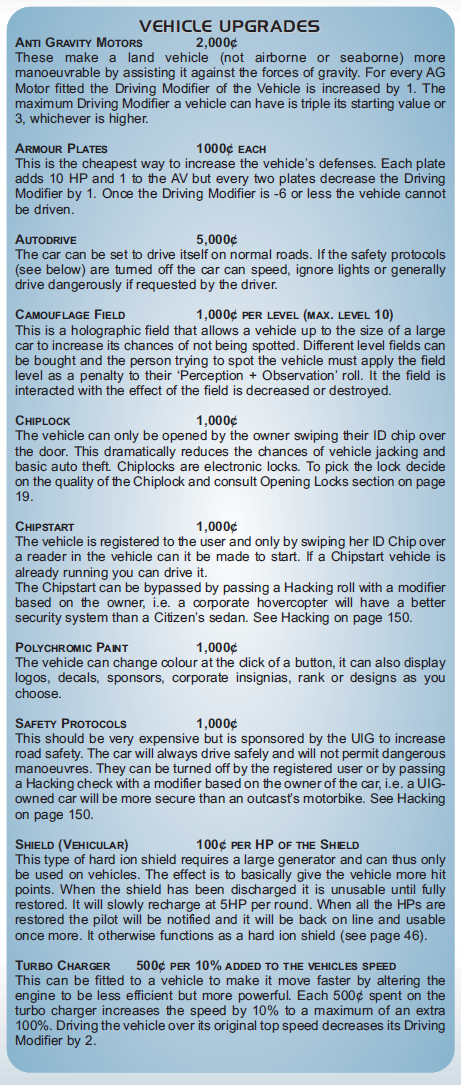
CYBERLINS
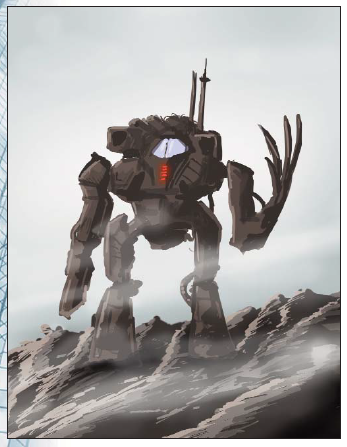
Cyberlin stands for Cybernetic Elimination Unit. They're bipedal robots that range in size from 20 to 200 meters in height and have a pilot that controls them. Originally Cyberlins were designed as "clean" weapons of mass destruction in the Corporate Wars. Now Cyberlins are used for heavy industry, defensive purposes and more. A Cyberlin is basically a headless body with tools or weapons where the arms would be, the pilot residing in the chest. Common variations of Cyberlin involve replacing the legs with treads or multiple legs or augmenting the torso into segmented platforms to carry workers or supplies. Most Cyberlins are produced by Ai-Jinn.
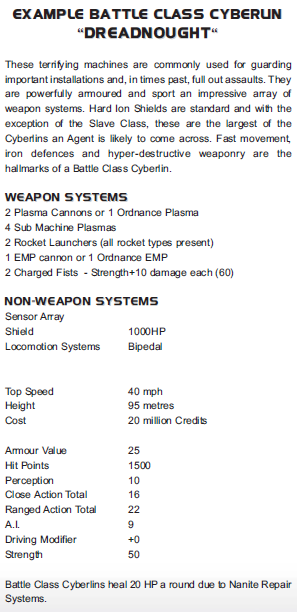
The rules for Cyberlins are pretty incomplete and intentionally so; they're found in the Ai-Jinn sourcebook. In a basic mechanical sense, the pilot controls them and can unload as many of their weapons as they want at a single target; the more advanced a Cyberlin's AI, the more targets it can attack in one turn. Not coincidentally, advanced AIs are more likely to become self aware and turn the giant robots into sentient machines. The basic frames of Cyberlins are Battle, Slave, Watchdog and Ranger with Hunter, Predator, Ruin, Ocean, Raider and Scout Cyberlins being models created from modifying the base form. What do those names mean? Not a damn thing right now.
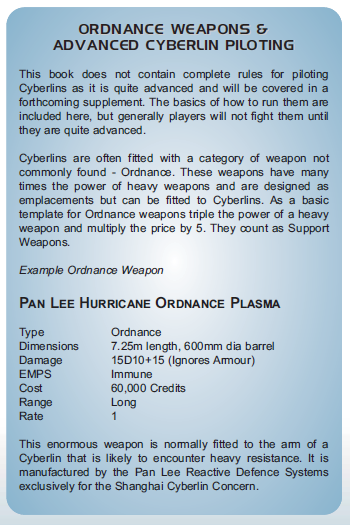
That's it for the equipment chapter. I like the variety of guns quite a bit. NEXT TIME is Chapter Three, Cybernetics. Cybernetics are quite neat and fun. I might also squeeze in Chapter Four, Telepathics. That is a very short chapter.
CHAPTER THREE: CYBERNETICS
Original SA post
CHAPTER THREE: CYBERNETICS
There is absolutely no downside to your Agent's well-being or state of mind if they decide to get cybernetics in Corporation. The developers have admitted to disliking the idea of a Humanity stat because they believe it restricts the fun of making your characters more powerful. There are some limitations, sure, but you're no less human for getting augmented. Hell, there aren't even limits to how many of these things can get installed in one part of your body at once. Also, somewhat importantly: most of these cybernetics can't be wirelessly hacked or hacked at all. If they can be hacked, it generally requires someone to plug into the part in question to do it.
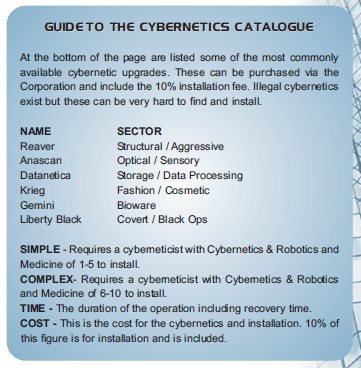
The big limitation is the price of augs and needing to get them installed and maintained. Basically you need to decide if you're going to have another player install them or if you're going to go to a doctor to get your installations. If you go to a professional, that's it, done deal. If you have them installed by an ally, you save 10% on the price that was already included as an installation fee. The downside to having another player install them is that you basically want them to have an idea of what they're doing and have the proper tools. If they don't, then rolling comes into the situation.
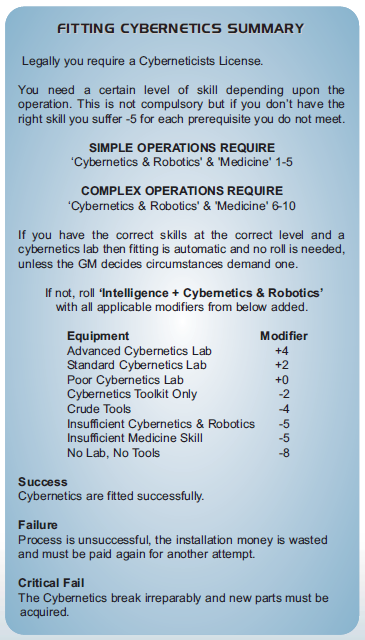
Of course, sometimes cybernetics break. Every 7-15 sessions (I would just outright say every 12 sessions), the Agent should get some maintenance done on their augs or else the installed items will drop one level of Condition. Maintenance costs 10% of your total value of upgrades (remember, your corporation maintains your starter package for free as part of your employment) or 5% if another player does the inspection (this doesn't go into their pockets, this is used to hand-wave purchase repair materials). It's honestly not the best system but I don't hate it; the fact that you get augs cheaper if another player installs them means someone will dip a little into the proper skills and those are enough sessions for them to not have to start play with a cybernetic surgery license but work towards it.
Condition 9 cybernetics are illegal to be fitted and would require some black market skullduggery and a friend to get them installed. Basically what happens when an implant has less than Condition 10 is that the GM rolls a d100 at the start of each session and each level of Condition has a chance of failure. A failure means that the implant is functioning at basic non-beneficial levels for the session until it's repaired; there's no real detriment besides it not working unless the GM rolls doubles on a failure and the implant is rejected by the body. Repairing and upgrading the condition of a cybernetic implant costs 20% of the new level's price (only 10% if a friend does the work) and can't really be done in the field. EMPs also lower the condition by 1 and negate the benefits of the implant until fixed.
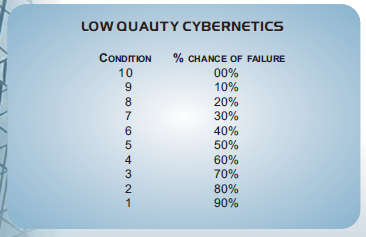
So ultimately the real downsides to getting cybered up are the costs of the parts and the costs of maintenance and repairs, which can be substantially lessened if someone knows their way around a wrench. Less mechanically, the Agent might draw the attention of the Cult of Machina (discard flesh, wear metal loony types), your upgrades have to be listed and registered on your ID and it's just kind of obvious how much of you is machine now. Those are more roleplay oriented, however.
The mechanical stuff is out of the way. Now we can get into the actual cybernetics.

ANASCAN OPTICAL TECHNOLOGIES
- Primary Sensory Enhancement (5k): The senses and the brain are modified to pick up more complex signals which are sent through a processor to your senses. +1 Perception, basis of most other Anascan augs.
- "Eternity" Recorder (3k): Stores up to a week of high def audio visual footage recorded from the owner's eyes and ears. It can be played back wirelessly to visual displays or the owner can mentally rewatch recorded footage, parsing a day's footage in a hour. The recorder can be turned on or off mentally at will. Requires the PSE.
- Midnight Vision System (1k): An image interpreter is attached to the PSE and allows the user to see in the dark as a free action.
- Range Targeter (4k): Places a trajectory measurement system over the owner's vision to grant +2 to all rolls involving throwing. Requires the following implant.
- Reticle Eye (7k): Replaces an eye with a synthetic eye with a targeting reticle. +2 to hit with a ranged weapon that has a 500c aiming sync attachment. The attachment lowers the gun's EMPS by 1 or makes the EMPS 15 if it was previously immune.
- Telemetric Vision (4k): An artificial lens replaces the organic lens in one eye and allows that eye to see in microscopic or telescopic vision. This procedure can be taken twice, one for each eye. Also grants +1 to Perception.
- Thermal Imaging (1k): adds a thermal imaging system to the PSE, allowing the user to see perfect thermal images.

DATANETICA RELIABLE FIELD PROCESSING
- Advanced Process Chip Socket (10k): upgrades the basic process socket to allow the use of advanced process chips (6+ ratings).
- Cerebral Link (15k): Crazy useful because it allows the user to survive being decapitated. The head is fitted with oxygenators and nourishment systems along with a wireless system that lets the severed head still control their body as long as they're within 30 meters of each other. The head can survive in this state for 48 hours and can be reattached with a simple application of Compound H. But what if the body is lost in the process? The head can be attached to a new body (either cloned or donated) which will reduce Strength, Agility, Reflexes and Endurance to 5 due to physiological shock. If you don't want to pay XP to raise your stats again, you can pay 1500c for recuperation drugs. If taken within a month of getting a new body, the stats will return to normal after a week and the R Drugs in the Agent's head will transform the new body into the Agent's old body. The downside of getting a new body is that all non-Corporate implants are lost (the company will give the new body all the basic implants again).
- Internal Translator (5k): The sub vocal communicator has a chip attached that translates received language into the owner's language for them to understand it. Ownership of a Krieg Voice Synth means that the owner can also respond in another language; the two implants synergize in that regard.
- Storage Drive (7k): a storage drive is implanted in the chest of the owner and it can hold an obscene amount of data (basically it's unlimited for gameplay purposes). The data can only be removed wirelessly with the owner's permission or via x-pin port (if it's hacked, it counts as a secure system). The storage drive can sync with the Eternity Recorder to record 50 weeks of footage.
- Dual Process Sockets (14k): requires advanced sockets and Int 8, gives the owner the ability to use two chips at once.
- Neural Jack (25k): An x-pin connecting cable is attached to the process socket and can be extended to allow the owner to interface with computers, vehicles and more with their mind. Alternately, pay an extra 1k to get the cable on a finger or in an arm so it's more convenient to connect. The neural jack gives +4 to Computer and AI rolls, cuts hacking times in half and allows for mental control of things. You cannot use a neural jack wirelessly because they're easy to intercept and hack and having your brain hacked is bad.

GEMINI BIOWARE
- Bio-Lynx Modified Teeth (4k): get your teeth removed and replaced with a white-colored metal alloy. Comes in two further varieties. Cutters have a servo installed and allow the owner to bite through 3 cm thick items as long as the owner can fit it in their mouth and doesn't have anything higher than AV 10. Great for handcuffs and padlocks! Wolf Jaw dislocates the jaw slightly and replaces the teeth with sharp animal teeth, giving the owner +1 Attitude and a bite attack at the cost of looking weird and slightly impeding speech.
- Fibroctin Nerve System (5k): the nervous system is coated with a substance called fibroctin which increases nerve transmission. +1 to Reflexes and this can be taken up to three times at 5k per treatment.
- Myotic Restructuring (5k): muscles all over the body are repeatedly damaged lightly with a laser and force-healed with an accelerant to increase Strength by 1. Can be taken up to three times, can't be used to make Strength surpass 10 without an alloy skeleton.
- Cardiomechanics (10k): the entire cardiovascular system is removed and replaced with ageless vat-grown tissue and cybernetic parts . +1 Endurance and contains a level 6 Toxin Filter, can be taken up to three times with the endurance increasing and the filter's rating going up by 1 each time.
- Digital Injector (5k): a finger of choice has an internal syringe installed that can be used to deliver injections in melee. Refilling the syringe is easy.
- Stealthskin (4k): polychromotophores are injected into the skin which can cause the skin to change color with focus and visualization. +4 to Stealth but the skin looks a bit synthetic and anemic.
- Toughskin (5k): a dermal hardener is injected followed by an iridium suspension to keep the skin from getting dry and brittle. +1 AV and the skin looks a bit darker, can be taken twice.
- Videoskin (15k): electronically-controlled chromotophores are injected into the skin so the owner can control what appears using their PDA. The skin also acts as a computer monitor in a pinch. +1 Presence and depending what's on the skin at the time, +2 Attitude, +2 Stealth or +2 Looking Good. Worth noting: none of these skins require independent use. You can totally have Tough, Stealth and Videoskin all at once.

KRIEG COSMETIC BIOMECHANICS
- Mystique Electro-Cosmetics (1k): polychromatic dyes are injected into the face and hands that allow a special stylus to bring makeup onto their skin and hands without any products needed. +1 Looking Good.
- Facial Reconstruction (4k): the face is removed and the muscles and bones are restructured before the changed face is reapplied. Just a cosmetic surgery.
- Ocular Repigmentation (1k): Can recolor the eyes to add striking colors, phosphorescence or both if a second surgery is performed. Striking colors add +1 Looking Good, phosphorescence adds +1 Attitude.
- Voice Synth (6k): a manipulator is added to the larynx that allows the owner to copy and perfectly replicate a voice they've heard (up to shouting levels) and chosen to store. The unit by itself can only store four vocal profiles but if attached to a Storage Drive it can hold practically unlimited profiles. Also, as previously mentioned, it syncs with the Internal Translator.

LIBERTY BLACK COVERT OPERATION SPECIALISTS
Unlike the other companies, Liberty Black can't be ordered through corporations or stores. You either have to contact them for delivery or visit their plant in Minsk for purchase and installation.


- Body Space (3k): a hollow cavity is implanted in the chest. The cavity is big enough to hold a small item around the size of a handgun or explosive. Two cavities can be implanted with a -10 modifier to find them (or a flip of a coin).
- Flat Hands (6k): the bones of the hands are fitted with electromagnetic hinges. On command one or both hands can essentially collapse and become floppy and useless until told to reactivate. The collapsed hands are easily pulled out of restraints or can fit into small places. +10 to escaping restraints.
- Palm Thorns (4k): subdermal keratin thorns are implanted beneath the skin of the hands and are controlled by the owner. +4 to climbing rolls and +1 unarmed damage.
- Switchprints (4k): This is an illegal operation so don't get caught. The patient's fingerprints are removed and discarded and replaced with synthetic prints that have three settings: two types of nondescript prints and blank.
- AMS Wrist Pistol (3k+price of pistol): A light firearm of choice is broken down and installed in the wrist, allowing three shots with the pistol before it needs to be reloaded. There are no downsides to having the pistol installed, just a -10 for people to find the gun.

REAVER CYBERTECH COMBAT CYBERNETICS
- AS2000 Alloy Skull (10k): the patient's skull is removed and replaced with an alloy skull that also contains cushions to reduce cranial trauma. +3 HP, +1 AV.
- Arm Defenders (3k): A pair of alloy plates are mounted on each forearm, either a meat arm or a machine arm. +1 AV, you keep your defense when fighting unarmed because you can block with the plates.
- Bodyplates (1k): Alloy plates are installed beneath the skin of the chest. You can install up to 4 plates, each plate granting +1 AV but every two plates reduces Agility by 1. There are lighter plates available in another book (nanium plates) but they cost more and they also take the same spaces as these plates.
- AS3000 Alloy Skeleton (18k): the patient's entire skeleton is removed and replaced with an alloy skeleton (not counting the skull). The new skeleton is just like the old one but allows for more strength and strain to be placed on the body. An alloy skeleton is necessary to surpass Strength past 10. It also gives +10 HP and +1 AV.
- Plasma Blades (15k): Blades are implanted into the hands and can be brought in or out as a free action. These plasma blades still ignore 4 AV but there's a +2 damage bonus for being a part of the user's hands. You might have trouble using your hands for other things when the blades are out though.
- Dermal Aggressors (6k): retractable spikes and blades are embedded beneath the skin throughout the body. When activated, they emerge and deal 2 damage to unarmed enemies attacking the user. If the user is grappling someone, the spikes deal d6 damage automatically to the other person.
- DX4 Cybernetic Arm (10k): an arm is enhanced with cybernetic parts. Both arms can be augmented if desires but requires two operations. Each arm adds +1 Strength but only the first arm adds +2 unarmed strike damage.
- DX7 Cybernetic Leg (10k): Cybernetic legs either replace missing ones or you can have the old one removed. Two can be fitted at once. Each leg adds +1 Agility but only the first adds +2 unarmed damage. The unarmed damage bonuses from the cyber arms and legs stack.
That's it for cybernetics! I really like Gemini because they use crazy/weird means to enhance people and I just dig how blasé they are about "peel back your skin and shoot your muscles with a lasers a whole bunch". You might be thinking to yourself "huh, this is kind of thin". Well, it is. More cybernetics come in the upcoming books but I do feel like they put together a solid basis and got the most important stat-boosting pieces in. The other books do contain some fun options, like replacing your entire arm with an anti-vehicle artillery cannon, retractable knuckle chainsaws, x-ray vision, swiss-army fingers or having a video game console installed in your arm. And since we have space...
CHAPTER FOUR: TELEPATHICS
Telepathics are basically magic in Corporation but you can be augmented to hell and back and have no bearing on your Telepathic ability. You need Telepath training to use any powers and you should also have the licenses for the powers you know. Using telepathic powers is a simple task: roll beneath Intelligence+Endurance and spend the TE at the level you want to use the skill at. If you're not in combat/under pressure, just spend the TE points to make the power happen. You only require the roll under pressure and failure just expends the points. A double 0 is a crit fail, a crit hit means you don't spend TE for the roll. You can also guarantee the power will happen by spending double points, have the power activate as a free action at the beginning of your turn by spending double points or maximize possible effect automatically by spending double points.
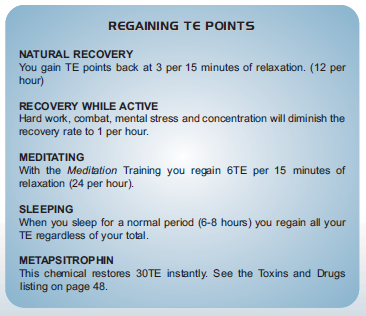
The only way to increase TE is to spend a max of 1 XP at the end of each session to raise your pool. The only way to increase a skill or learn new telepathic skills are to pay the XP cost.
TELEPATHIC SKILLS
- Assault: Assault deals 1d6 damage per point spent and can target up to Skillx10 meters away. It can be used in close combat but it doesn't count as a weapon for defense. Assault manifests into the world how the user imagines it to look: lightning, fire, brain daggers. This is just a simple visual appearance and the fire doesn't actually burn or whatever. A crit failure means you zap yourself instead of the target.
- Biokinesis: Heal yourself for 2 HP per point of Biokinesis. Biokinesis can also be used to purge poisons or toxins equal to your BK. A critical failure means you hurt yourself for three HP per level of point spent.
- Jump: You can leap your Jump rating in squared meters either vertically or horizontally. You also don't take any falling damage as long as you're within the range you were shooting for. A crit failure means you launch yourself at something solid by accident and take 1d6 damage per point attempted.
- Prescience: You gain the benefits of one of the following when points are spent. Add Prescience to your TN to raise it to predict where the enemy will be and make shooting them easier. Gain points in your Reflexes equal to your Prescience for a scene. Gain sixth sense for incoming danger for a scene, gaining bonus dice to avoid danger. Crit failure wracks you with indecision, leaving you unable to act for 1d4 turns and getting -2 to all rolls for the rest of the scene.
- Psi Blade: summon a longsword made of telepathic energy that deals 1d8+strength+Psi Blade points. It lasts for a scene before it needs to be reactivated. You can also summon two with proper training. Crit failure means you mess up forming the blade and burn your hand for 2d6 damage along with rendering that hand unusable for a scene.
- Shield: summon a psychic shield that acts like a hard ion shield. The shield's HP is equal to your Shield points used squared and can't be bypassed with a laser. It lasts for a scene but costs a free action a round to maintain it. A crit failure accidentally creates a psychic dead zone around you that inhibits your powers for rounds equal to the shield level.
- Telekinesis: TK lets you move a combined mass of your points squared in kilos for up to pointsx10 meters. Each round requires the points to be spent to maintain the moving. Items can be hurled or pulled from people's hands. People can also be thrown with a resisted roll. A critical failure means you accidentally summon a collection of things to hit you, dealing 1d6 per level of TK.
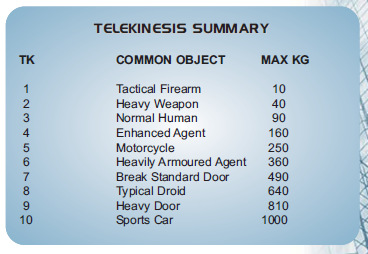
And that's it for psychic powers. They're pretty simple and yeah, they're not really the best thing in the world to use. If you want a dedicated telepath, you really have to build for one (Comoros Agent, the training that gives you +20 TE). The big upside is that they only cost XP to improve their powers as opposed to money and Assault can be a handy emergency weapon, but telepathic powers aren't vital in the slightest.
NEXT TIME: we'll skip 5 (already covered) and go to Chapter 6 to learn all about the corporations.